https://www.thinglink.com/card/1907924839272808934
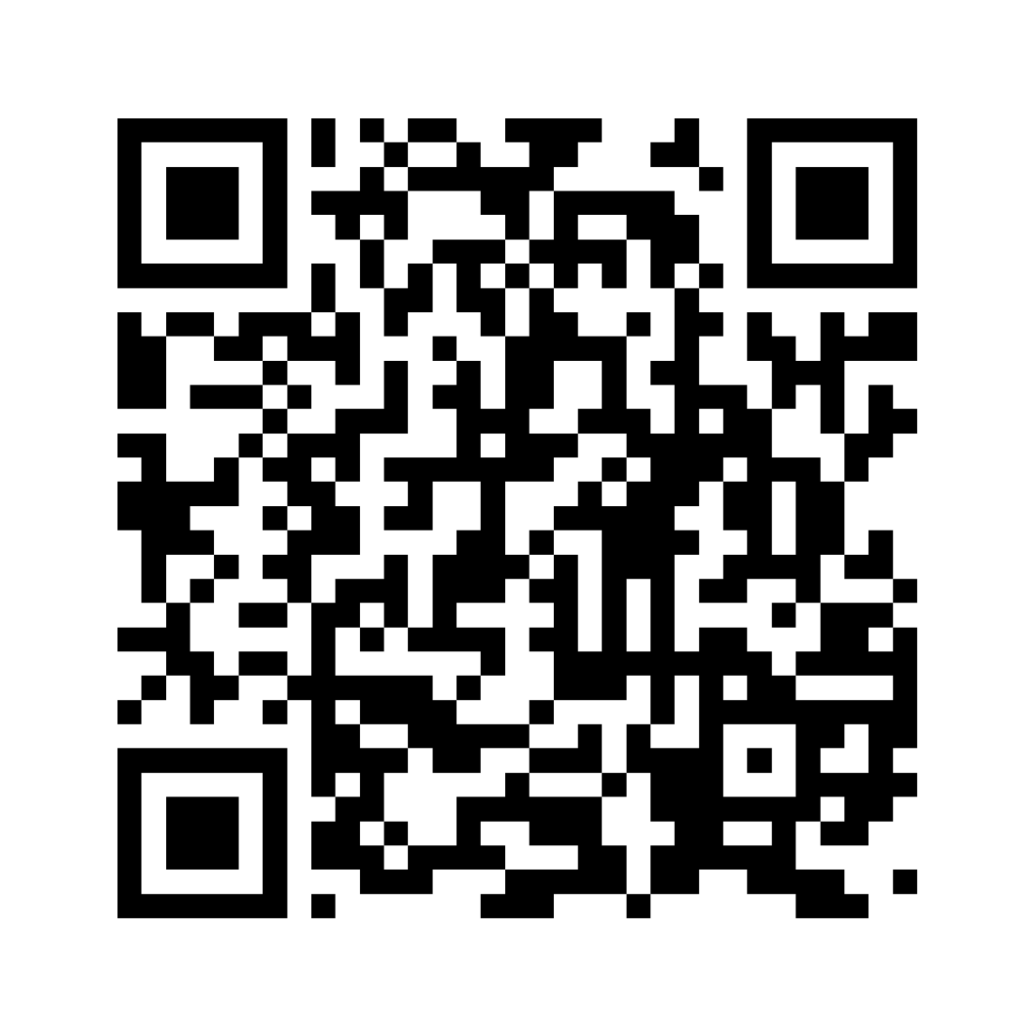
Magnificent Macrame
Last semester, I had the opportunity to learn about the importance of morning meetings and how to effectively run one. I found the concept of morning meetings to be incredibly valuable, as they provide a structured time for students to connect with one another and feel heard right from the start of the day. These meetings not only help build relationships within the class but also create a sense of community and belonging.
I have now had the pleasure of seeing a meeting in action in Mrs. D’s grade 6 class. Before I can explain what I observed in her classroom, I would like to give you a description of what a morning meeting looks like.
Greeting
Students and teachers engage in greeting each other by name, showcasing their creativity through fun and innovative methods, such as high-fives or fist bumps, non-verbal gestures like peace signs or thumbs up, saying “Good morning” in different languages, and many more fun ways. For more examples please visit https://proudtobeprimary.com/greetings-for-morning-meetings/
Sharing
Teachers encourage student engagement by posing thought-provoking questions spanning a wide spectrum of topics, ranging from current events to fantastical realms, igniting curiosity and imagination within the classroom. Examples of these questions are “If you were a superhero, what would your name be? What powers would you have?”, “How do you help others?”, and “Of all the things you are learning, what do you think will be the most useful when you are an adult?”. For more examples please visit https://learngrowblossom.co/105-morning-meeting-sharing-ideas/
Group Activity
All individuals take part in a brief and dynamic activity aimed at strengthening group unity while allowing students to sharpen both their social and academic skills. These activities may include reciting poetry, dancing, singing, or engaging in interactive games. For more activities please visit https://elementaryedu.com/2021/12/morning-meeting-activities.html
Morning Message
Students engage with a brief message composed by their teacher, designed to guide their focus towards the day’s academic tasks and activities. The teacher tailors the message to facilitate student understanding and preparation for the day’s learning objectives. For ideas on how to compose a morning message please visit https://elementaryedu.com/2021/12/morning-message-ideas.html
For more information on morning meetings and why they are so important in a classroom watch the short video below.
During the grade 6 morning meeting, student’s were posed the question “If your favourite colour had a smell, what would it smell like?”. Students had a lot of fun answering this question, but were forewarned not to make their smell gross, or she would end the sharing. I was able to participate in this sharing and my answer was hot pink and it reminded me of Hubba Bubba gum 🙂
One thing I observed in this class during their morning meeting was that it was an “Everything you may, nothing you must” type of activity, and students had the freedom to pass if they did not want to participate. It was intriguing to see students who passed often, but when something they enjoyed was introduced, they were eager to join in. This fostered a positive and supportive classroom environment, where students felt comfortable sharing their thoughts, concerns, and experiences.
Moving forward, I’m excited to implement morning meetings in my own classroom as a way to prioritize student voice and cultivate a welcoming and inclusive learning environment. Please enjoy below a kindergarten morning meeting I co-created with a classmate in my management class last semester.
Morning Meeting: Kindergarten
Created by Kelly and Lauren
Check in: Sign in question will be on the board, as students are filing in they will sign their name in one of four quadrants answering which season they like the best. Each quadrant will have the word as well as a season image to help them figure it out. Normal classroom we would have a few students arriving at a time and would be able to help them.
Greeting: T-Rex Handshake
Try to find one friend you haven’t greeted in morning meeting yet this week
Sharing: What do you like about the season you chose?
Quickly go over what full body listening looks like by asking students for examples.
Group Activity: A Fall Wind Blows
Teacher will say “A fall wind blows for everyone who” and then follow it up with a trait, meaning something specific, and if it relates to a student, they jump up and wiggle. Example “ A fall wind blows for everyone that is wearing black,”
News and Announcements:
When reading the classroom announcements the teacher will be using their finger pointing out each word as it is being read.
From here we would transition into math with fall themed manipulatives – leaves, pinecones, pine needles etc.
Sending students back in groups helps prevent miss behaviors like pushing and shoving.
I found it difficult to answer this question at first because I don’t remember a book that ‘changed my life.’ However, it made me think of the books that played a significant role in shaping my love for reading, particularly those read to me by my Nana. She lived with us from the time I was born, helping my mom raise me and my siblings after my father’s brain injury. When I was six, we moved from Calgary to B.C., but I can vividly recall the cherished moments of reading stories with her at night before bed. One story that stands out in my memory is ‘Come Over to My House’ by Theo. LeSieg, Dr. Seuss, First Printing. I would eagerly ask my Nana to read it to me, and those moments hold a special place in my heart.
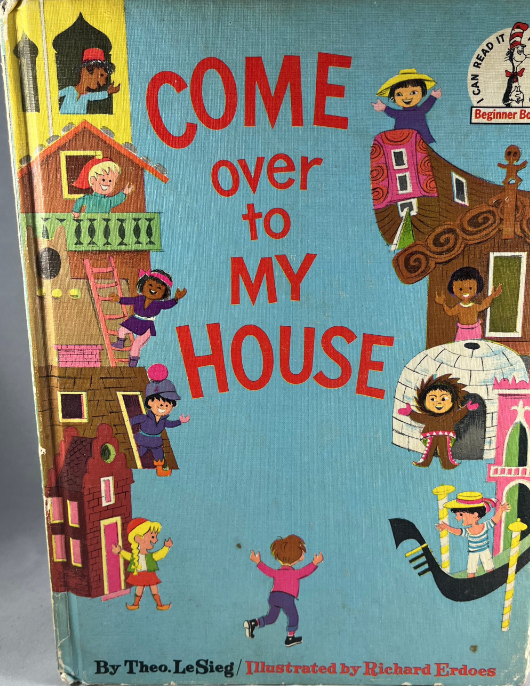
https://www.etsy.com/ca/listing/1403439400/come-over-to-my-house-by-theo-lesieg-dr
This book features children from different ethnic backgrounds inviting each other to their homes. It celebrates diversity and inclusion.
I said earlier my Nana changed reading for me because she also worked with me on the program Hooked on Phonics. I am not sure if the program was bought for me or my siblings, but I know my Nana and I would do this together all the time.
Please enjoy this nostalgic video from the 90’s briefly explaining the program.
https://www.facebook.com/watch/?v=1282765001914828
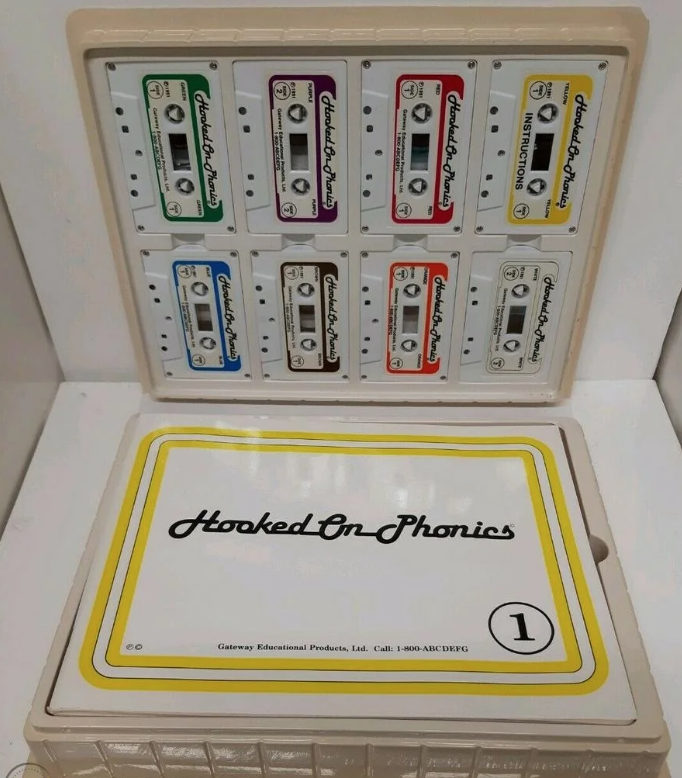
https://www.reddit.com/r/nostalgia/comments/ybv441/hooked_on_phonics_worked_for_me_1991/
Hooked on Phonics still runs today, but they have changed their ways from cassette tapes 😉
Before we begin, please go and grab a piece of paper and a pencil. I am about to assess you on spelling. Sorry, but you have no time to prepare, and you can only take the test this way. Oh yeah, did I forget to tell you this is a test? You also only have the length of the video to complete your test; no additional time. When you are ready, please begin the video below. Good luck!
So how did you do? Did you get 20/20?
How did you feel when writing that test? Stress, anxiety, panic, excitement? Personally, I freeze up when I spell and have never been very good at it. Thank goodness for spell check! A few weeks ago, I was in a classroom learning about the University of Florida Literacy Institute (UFLI), where I discovered spelling rules I had never heard of before. When I was growing up, I learned to memorize my spelling words and did boring worksheets to help me remember them. I don’t recall learning that when a single-syllable word ends with the /k/ sound directly after a short vowel, it’s typically spelled with “ck,” as seen in “duck” and “trick.” However, when the /k/ sound follows a consonant or a long vowel sound, it’s typically spelled with just “k,” as exemplified by words like “task,” “cake,” “soak,” and “hawk.” Did you know that?
In today’s education environment, teachers are increasingly moving beyond conventional tests to evaluate students. Instead, they are exploring various strategies to assess each student in multiple ways, enabling them to demonstrate their learning in styles that match their individual preferences. While recognizing that not every assessment method may suit every student, present-day classrooms are embracing the understanding that the range of assessment approaches available ensures that every student has ample opportunities to showcase their learning.
For my future practicum, I am creating a novel study for my grade 5/6 class. For one of my assessment pieces, I will be marking students on their ability to write a proper paragraph using a rubric. In the novel I will be reading “Mr. Terupt Falls Again,” a sequel book by Rob Buyea, characters explain what they did over the summer break. For my assignment, students will be creating their own summer holiday and describing it to me in one paragraph. Below is the rubric I created to assess their paragraph when they have finished their final copy.
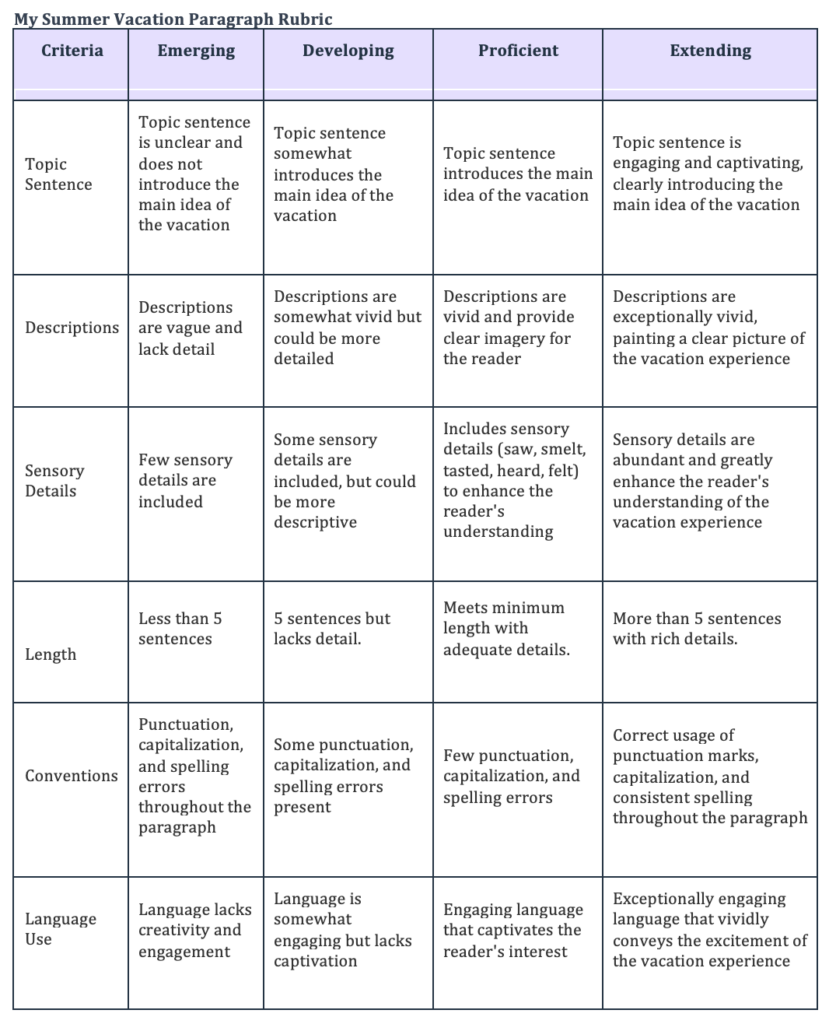
The rubric was created using https://app.magicschool.ai/tools. Which I spoke about a few posts ago 🙂
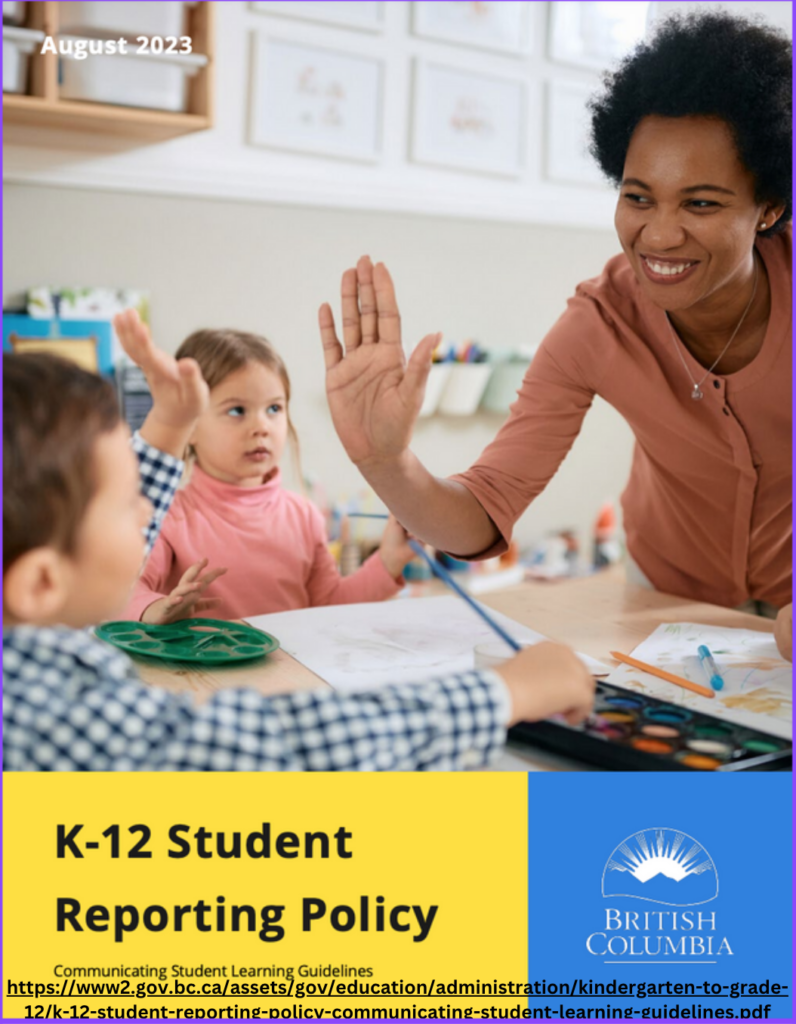
The Student Reporting Policy in British Columbia outlines guidelines and expectations regarding the assessment and reporting of student progress. This policy emphasizes the importance of clear and transparent communication between teachers, students, and parents regarding student achievement and learning outcomes. It promotes ongoing assessment practices that focus on student growth and development rather than just final grades. Additionally, the policy encourages the use of a variety of assessment methods to provide a comprehensive understanding of each student’s strengths, areas for improvement, and individual learning needs. Furthermore, it highlights the significance of providing timely and constructive feedback to students to support their continuous learning journey. Overall, the Student Reporting Policy in BC aims to foster a collaborative and supportive environment that prioritizes student success and well-being. For a full detailed outline of the policy visit the link below.
Proficiency Scale
Emerging –> Developing–> Proficient–> Extending




Proficiency scale pictures found on pages 28-29 of the K-12 Reporting policy website provided above.
The proficiency scale offers several advantages over traditional letter grades for reporting. Firstly, the proficiency scale provides a more detailed assessment of student progress by identifying specific levels of achievement (Emerging, Developing, Proficient) rather than general letter grades (A, B, C). This allows for a more comprehensive understanding of student strengths and areas for improvement. Additionally, the proficiency scale aligns more closely with the principles of formative assessment, focusing on ongoing learning and growth rather than simply assigning a static grade. By emphasizing progress over time, the proficiency scale encourages a growth mindset and fosters a culture of continuous improvement in both students and educators. For more details on the benefits of the proficiency scale please visit https://www2.gov.bc.ca/assets/gov/education/administration/kindergarten-to-grade-12/unpacking-the-proficency-scale-support-for-educators.pdf
Parents today are receiving more detailed information three times a year to track their child’s progress throughout the school year. Below is a fictitious report card comment that my classmates Claire, Karis, and I created. Notice how the comment addresses Gunther’s strengths and areas for improvement specifically.
“This term in ELA the students participated in a novel study based on the book Wonder by Raquel Jaramillo. Our class took part in sharing circles with discussions on current events. We finished the term blogging about adventure stories, and our Carnaval de Quebec school celebration! “Gunther has continued to work hard in ELA this term and is developing in this area. He clearly responded to comprehension questions and tasks in a timely manner. He was able to make several direct, concrete and obvious personal connections to text. I encourage Gunther to push to make deeper, less obvious connections and predictions. When blogging, Gunther offers ideas that are related to the topic to encourage further discussion. Though he can introduce topics, he tends to lose focus and needs some redirection to get back on task. I suggest Gunther proofreads his blog posts before posting as he often has grammatical errors. I look forward to seeing Gunther’s improvements through next term.”
The B.C curriculum and how we assess students has made a drastic change over the last several years and I am excited to be apart of the new journey in educating our future society.
For three weeks, I had the pleasure of observing students in a grade 5 class. Mrs. A’s class begins their day with 20 minutes of physical education (P.E), shared with another class. These students move their bodies and get their brains fired up before heading to class. Last year in my P.E class, I had the pleasure of reading an amazing book called ‘Spark: The Revolutionary New Science of Exercise and the Brain’ by John J. Ratey, MD. According to the book, ‘German researchers found that people learn vocabulary words 20 percent faster following exercise than they did before exercise’ (pg. 45). Allowing these students to run wild before learning begins helps them learn better when language arts class starts.
After returning to class students began to learn about commercials and how they themselves were going to create a commercials in groups with their classmates. To begin this unit, Mrs. A showed her different commercials and explained how commercials use four strategies to hook their audiences.
The first style is called Bandwagon. In this type of commercial, the audience believes they should buy the product because ‘everyone else is doing it.’
The second style is known as Celebrity Spokesperson. As the title implies, these commercials feature someone famous to endorse their product.
The third style, Humor, sets out to make the audience laugh but often provides very little information about the product being shown.
The last style reaches the audience’s heart and makes them feel certain emotions for what is being shown. This style of commercial is titled Emotional Appeals.
Mrs. A handed out large green worksheets for the students to use while watching videos of these different styles of commercials.
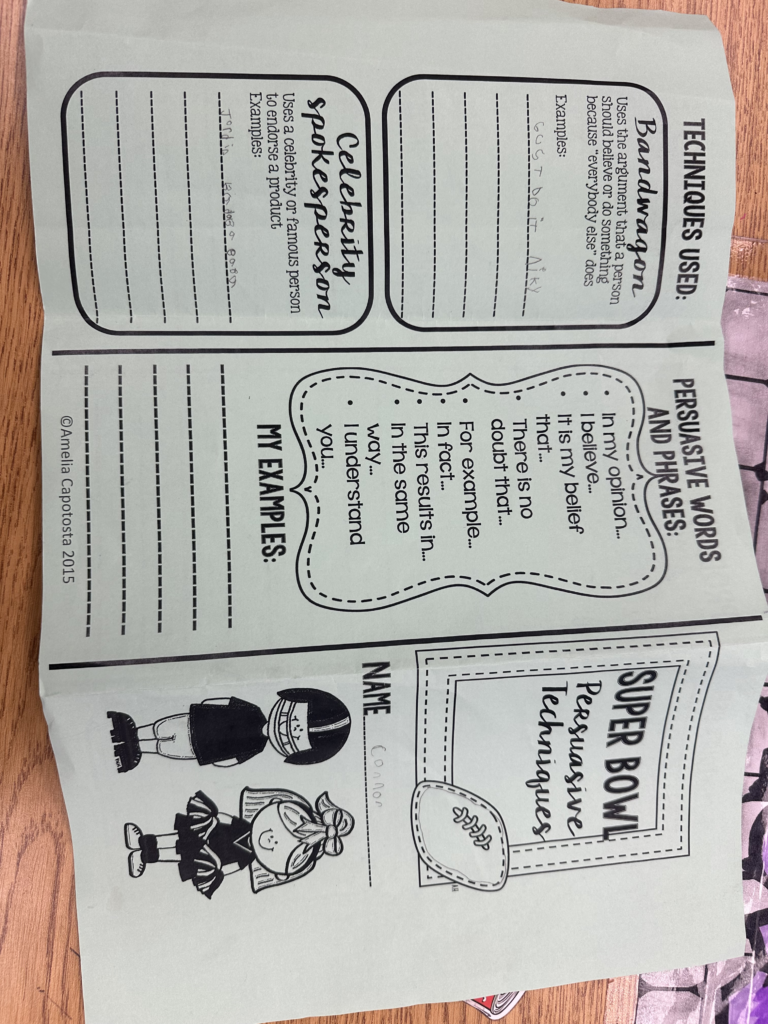
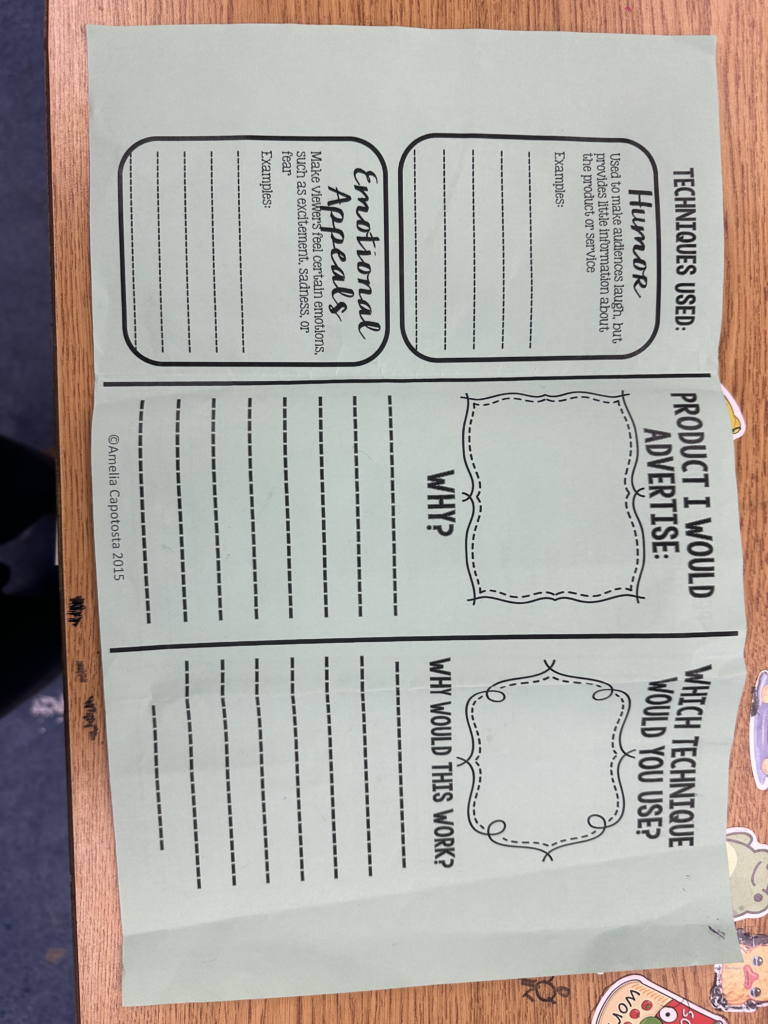
I cannot find the exact video that she used in her classroom, but here a few to watch to understand what the students saw.
After watching these commercials, students were than tasked to create their own commercial using one of the styles they had just learned about. The next few classes students worked in groups to create their commercials. Again, they were tasked with large green worksheet to help them create their commercials.
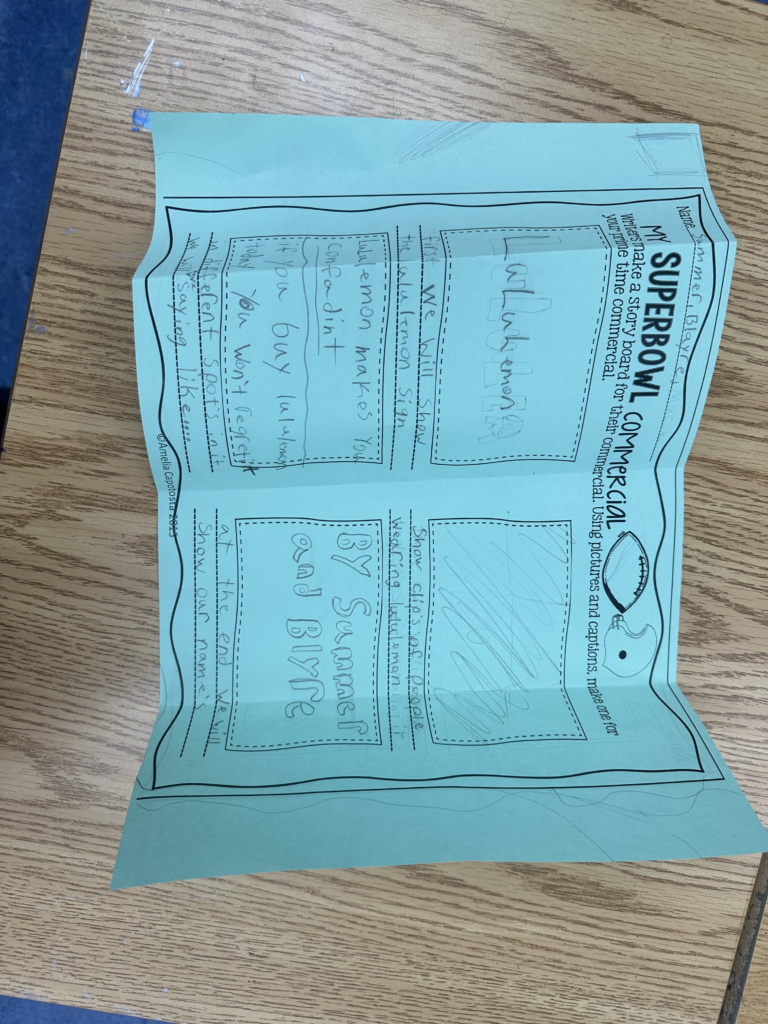
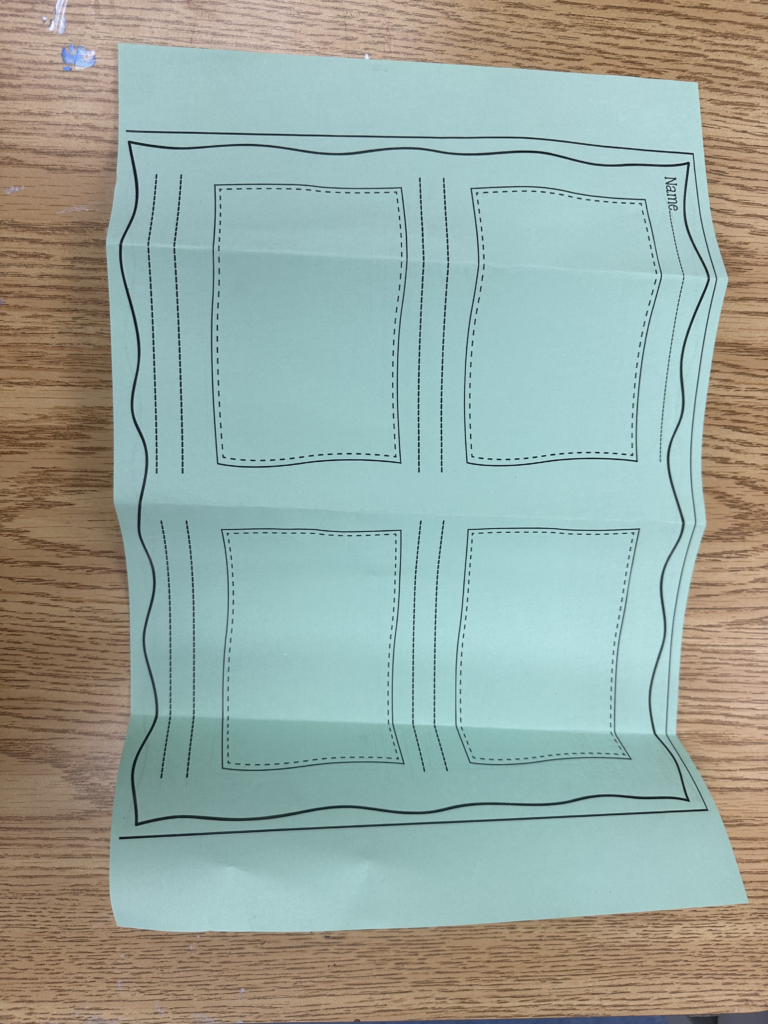
Unfortunately, my time in that classroom ended before I could see the final product, but I could tell they were going to be amazing because the students were having so much fun creating them. The students learned how to question what they heard and read to become educated and engaged citizens, a Big Idea under the B.C Curriculum. They also had the chance to develop skills through practice, effort, and action, which is another Big Idea under Applied Design, Skills, and Technologies in the B.C Curriculum. These students were learning but having so much fun, rather than completing boring worksheets and tests.”
I loved this idea and if I ever work in a class that is grade appropriate, I would love to use this idea!
This week’s class explored Story Vines. It was the first time I had heard of them, and I really like the idea. I enjoy providing students with another form of expressing their ideas beyond pen and paper.
Story Vines are a fun and creative way for students to practice retelling a story. In ‘Sometimes Reading is Hard,’ Marlene McKay attributes the origins of Story Vines to an ancient African storytelling tradition, highlighting their potential for enhancing language skills and fostering literacy across the curriculum.
Story Vines help students ‘develop an understanding of story and sequence, introduce new vocabulary, link visual imagery with reading, and develop fluency in reading and speaking’ (Bright pg. 90)
To learn how to create a Story Vine I tried one out for myself! There are 8 steps to creating a Story Vine.
Bright, R. ‘Sometimes Reading Is Hard. Using decoding, vocabulary, and comprehension strategies to inspire fluent, passionate, lifelong readers’. Pembroke Publishers Limited. 2021.
I took the time to create a Story Vine for the book ‘The Paper Bag Princess’ by Robert Munsch, illustrated by Michael Martchenko. Having known this book my whole life, I was very familiar with the storyline.
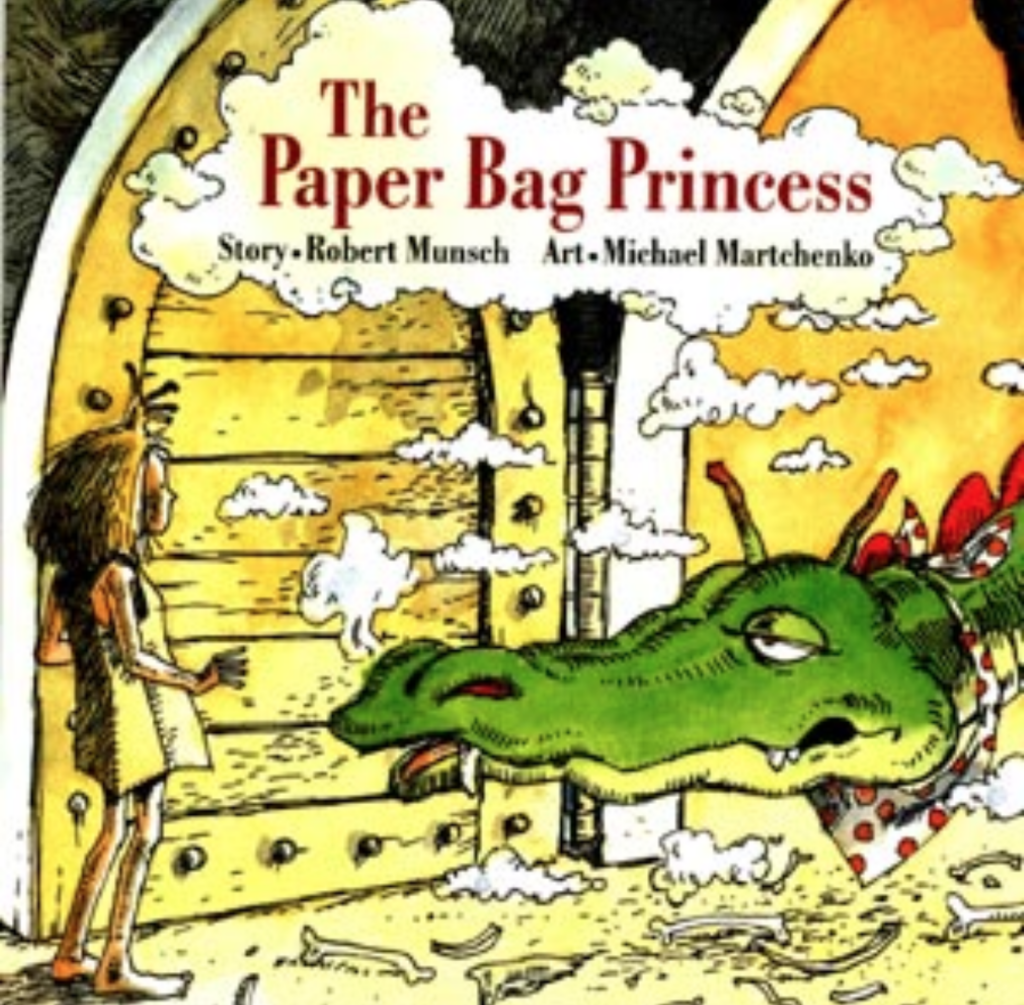
https://en.wikipedia.org/wiki/The_Paper_Bag_Princess
When I was an Education Assistant, I participated in book character dress up day. I chose to dress up as Elizabeth from The Paper Bag Princess as my character for the day.
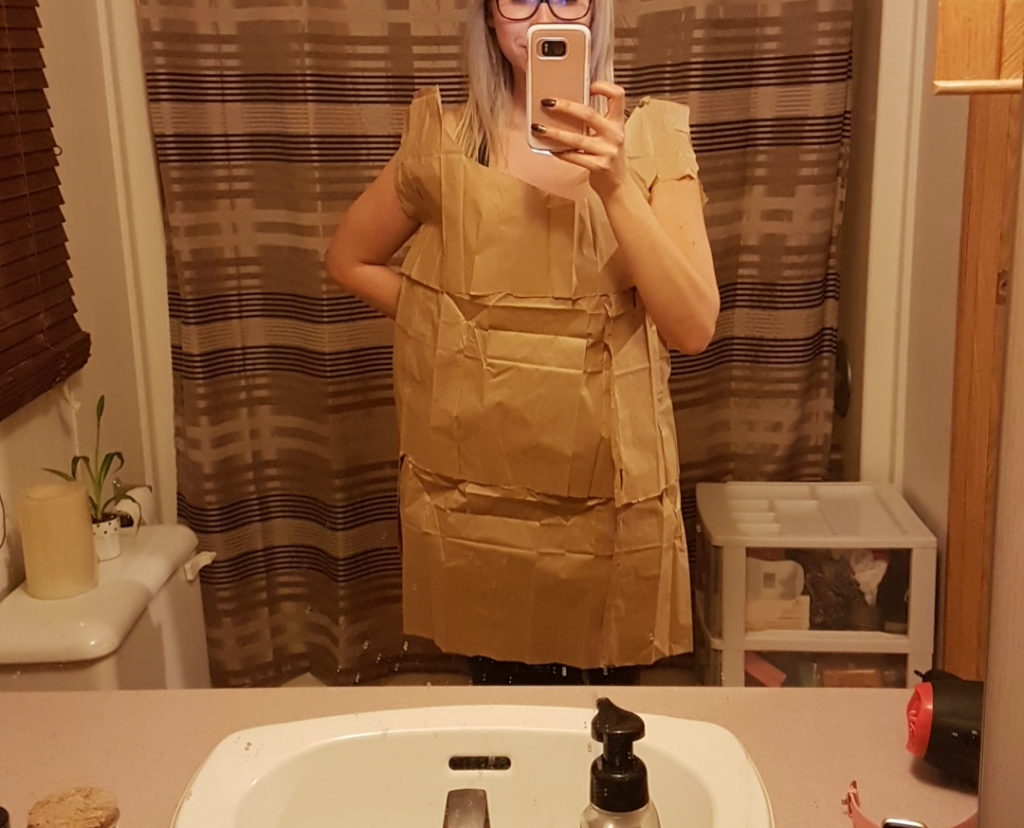
When working with primary students, it is important that they learn about elements of a story, including setting, characters, events, story structure (beginning, middle, and end), theme, and conflict. Through a Story Vine, students can express all of these elements in a fun and creative way.
I hope you enjoy the Story Vine I created 🙂
The first part of my Vine tells the story of Elizabeth and Princess Ronald and the love they had for each other.
*Please notice the love rope that runs down the Vine.
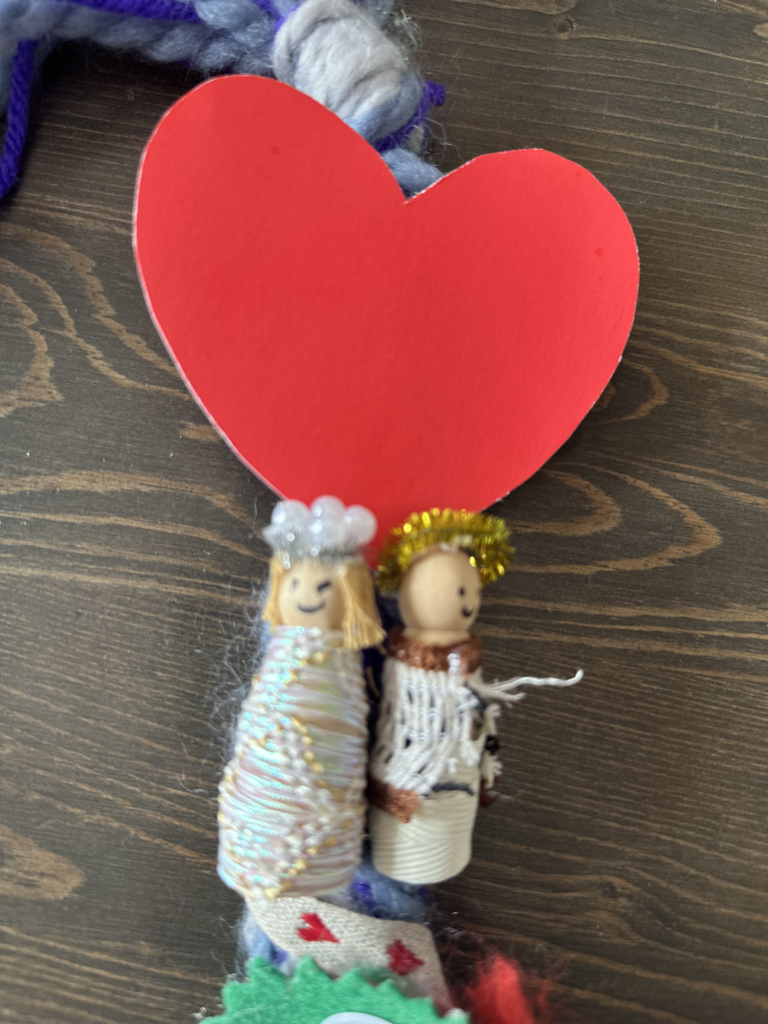
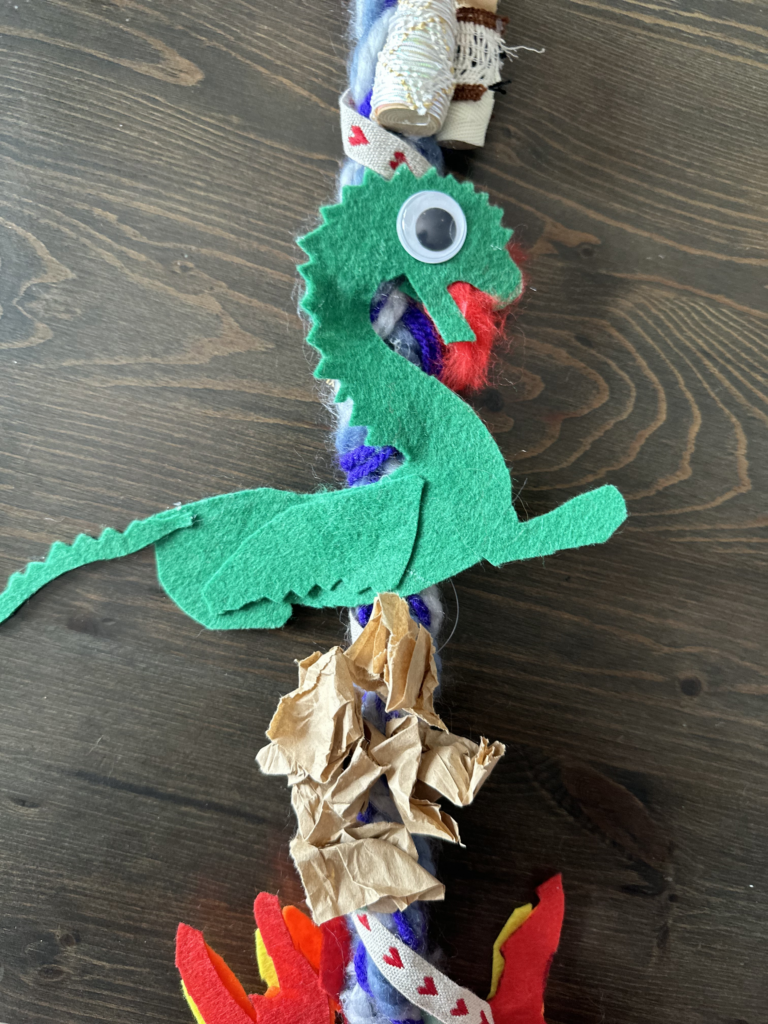
A fierce dragon appears and burns down the castle destroying everything inside and capturing Ronald. Elizabeth must wear a paper bag and go rescue her love from the dragon.
In her quest to rescue her love, Elizabeth seeks out the dragon and cleverly challenges it to various tasks, anticipating that the dragon would eventually grow tired and need to rest. After tasks such as burning down forests and traveling around the world, the dragon indeed becomes fatigued and takes a much-needed rest.
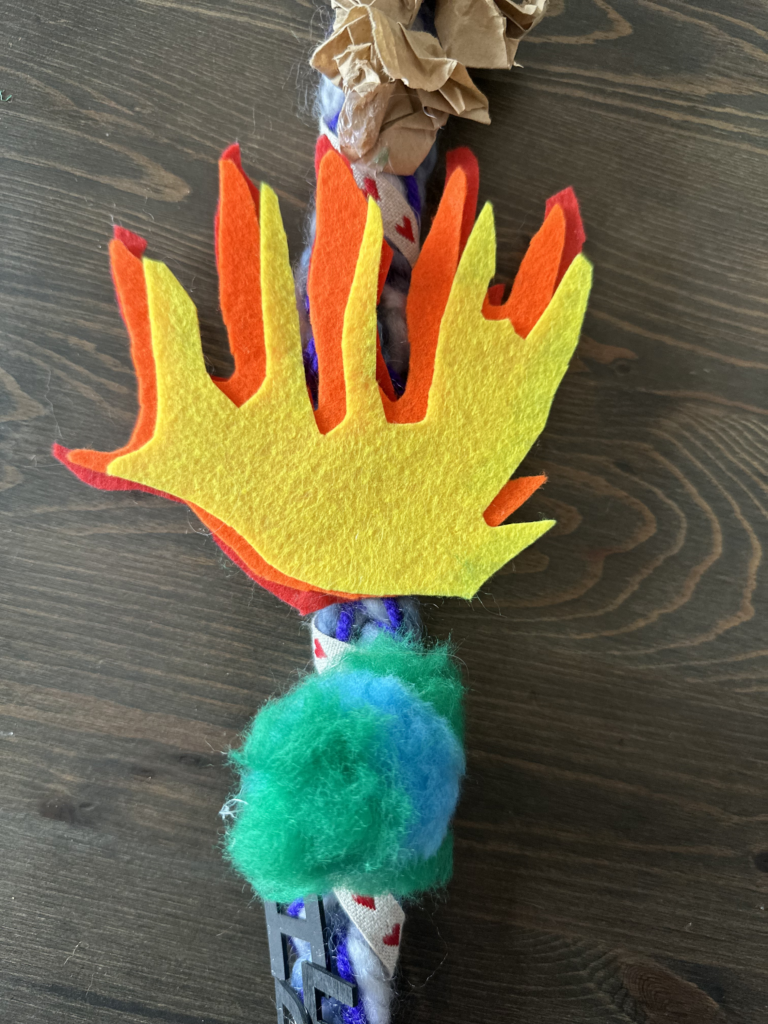
After saving Ronald, she realizes that she is better than him and can live a better life without him.
*Notice that the love rope ends when Elizabeth saves Ronald.
She dances away happily as an independent woman!
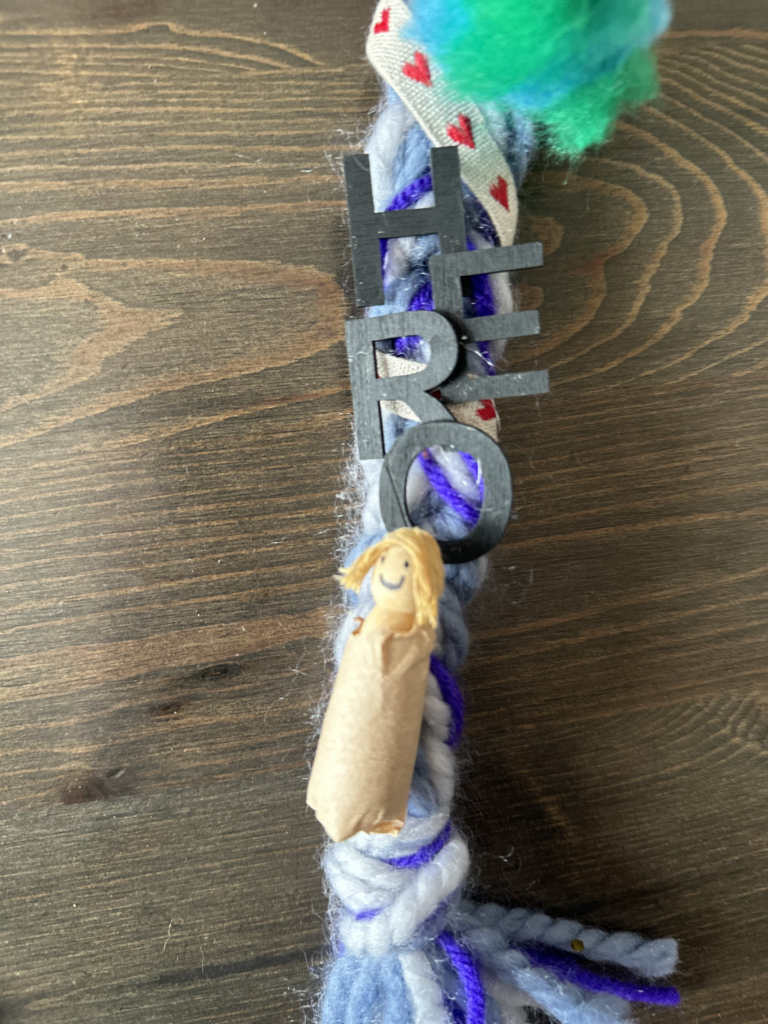
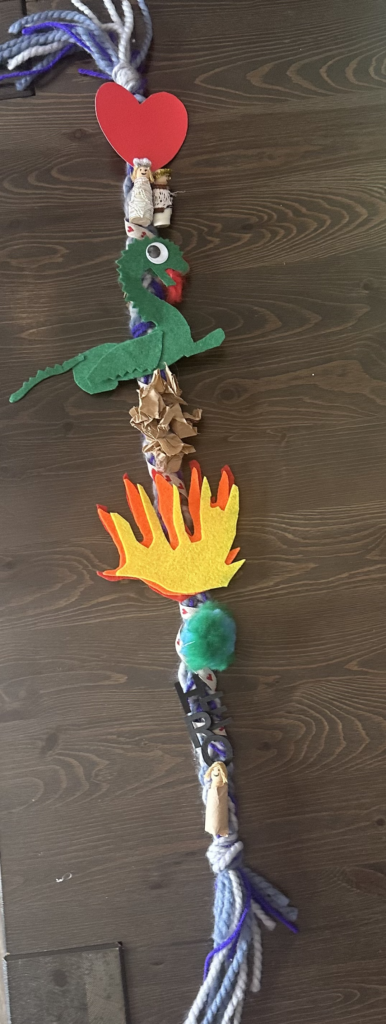
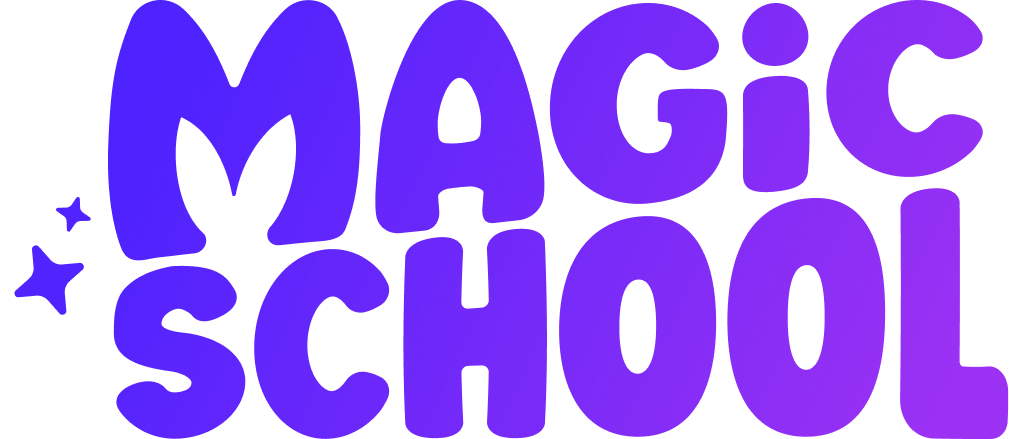
I have just been introduced to a life saving, time saving, stress saving, tool to help me be a better teacher for my future students. With the new B.C curriculum being so broad, it can be very intimidating for new teachers to come up with new lesson/unit ideas. This new AI tool can help any new teacher create a engaging lesson, or even unit!
https://app.magicschool.ai/tools
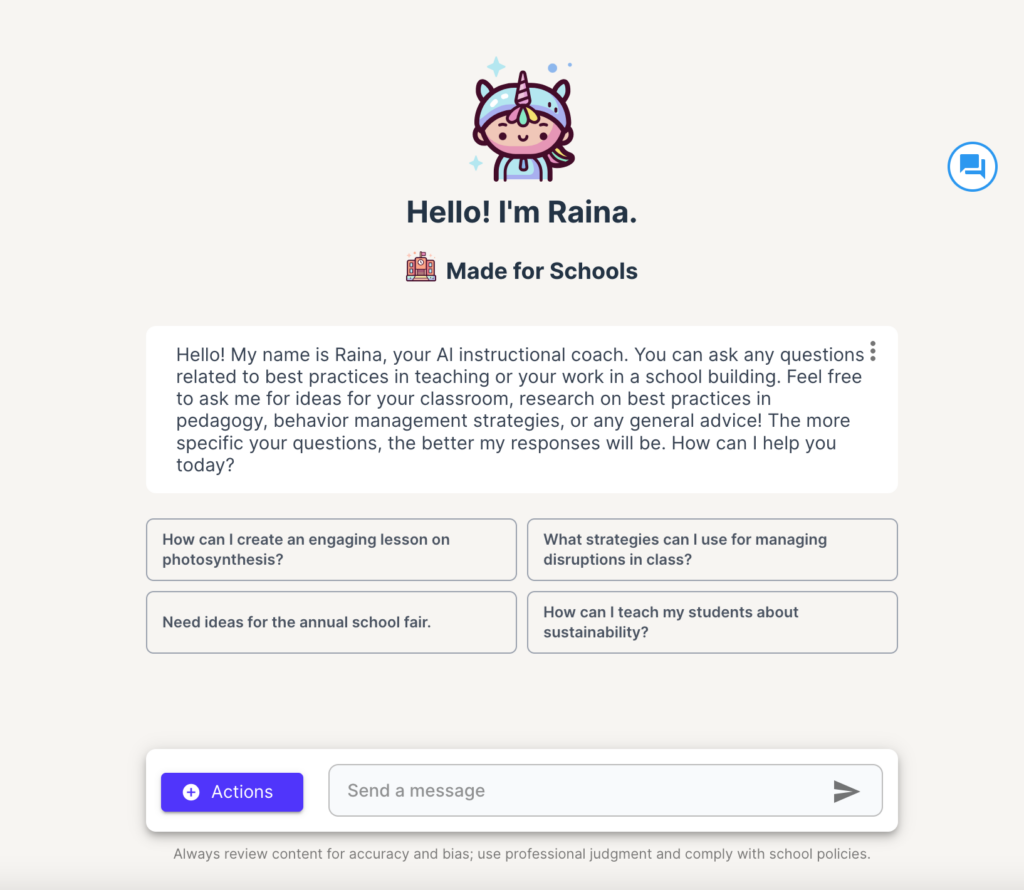
First, let’s talk about my girl Raina! She’s your go-to gal for any school-related questions. As seen in the photo to the left, you can ask Raina just about anything, and she’ll search the whole web to find helpful solutions.
Next, let’s explore building a lesson! Begin with the grade level, topics, any additional criteria, and you can even set it to the B.C standards. After clicking ‘generate,’ the AI tool creates a very specific lesson plan based on the details provided. It includes what the students will be assessed on, introduction, activities, closure, extensions, and homework ideas. From there, you can ask the tool any questions related to your lesson, such as where to find available resources to help you with the lesson.
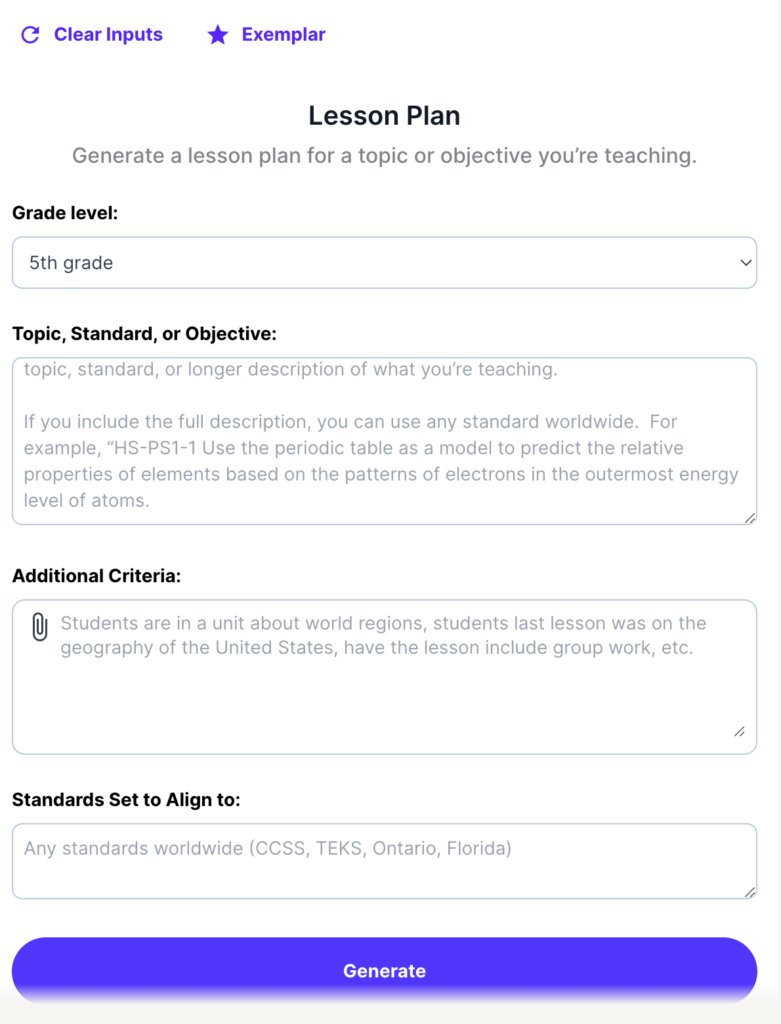
One of my biggest fears about becoming a teacher was the possibility of making a fool of myself by not having correct grammar or not sounding ‘smart’ enough when writing to adults. Now, thanks to this AI tool, I can check my grammar or have the tool create an appropriate message for adults to read. The Magic School tool provides so many writing solutions that I no longer have this fear. Below are just a few tools that are provided with Magic School.



This one here is probably my favorite find! As I mentioned earlier, the B.C. curriculum is so broad that it’s challenging for a new teacher to know what needs to be taught. The unit generator doesn’t provide specific activities but an outline of what needs to be taught so that students can understand the topic. From there, you can use the lesson generator to get activity ideas. For me, I just need to know what to teach, and then my brain starts generating ideas on how to teach it. However, after teaching the same subject for a few years, it might be good to learn new ways to teach, and this AI tool will be perfect for that.

There is so much more to explore on Magic School, and I feel like it will be a work in progress as I continue my education journey and career. Here are just a couple of snapshots of other features I can’t wait to use one day!



For today’s post, I’ll guide you through a morning in a grade 1 class, observing them engage in the UFLI program. The teacher was involved in the pilot program when School District 5 introduced UFLI. It was truly enjoyable watching her interact with her students and witnessing how the program operates.
The teacher kicks off her lesson on the carpet with students mimicking sounds and actions related to blended letters. The class explored two different “th” sounds, distinguishing between voiced and unvoiced sounds, as in “that” and “with.” They also practiced the “ch” sound, saying “chicken with a chill, ch, ch, ch,” while tapping their fingers on their arms. This part of her routine isn’t from UFLI but comes from Sound Connections, another literacy program. What I’ve come to discover is that sometimes it’s important to take a little from here and there and blend it together to create a Universal Design for Learning (UDL) environment that works for everyone.
After the activity, students went back to their desks to start Word Work. They used Blending Boards to make short words prompted by the teacher. She began by saying the word “chat.” Students moved letter tiles to create the word. Next, she instructed them to change a letter and make the word “chap.” She continued this process, instructing students to change letters, and occasionally, they would all say the word together out loud.
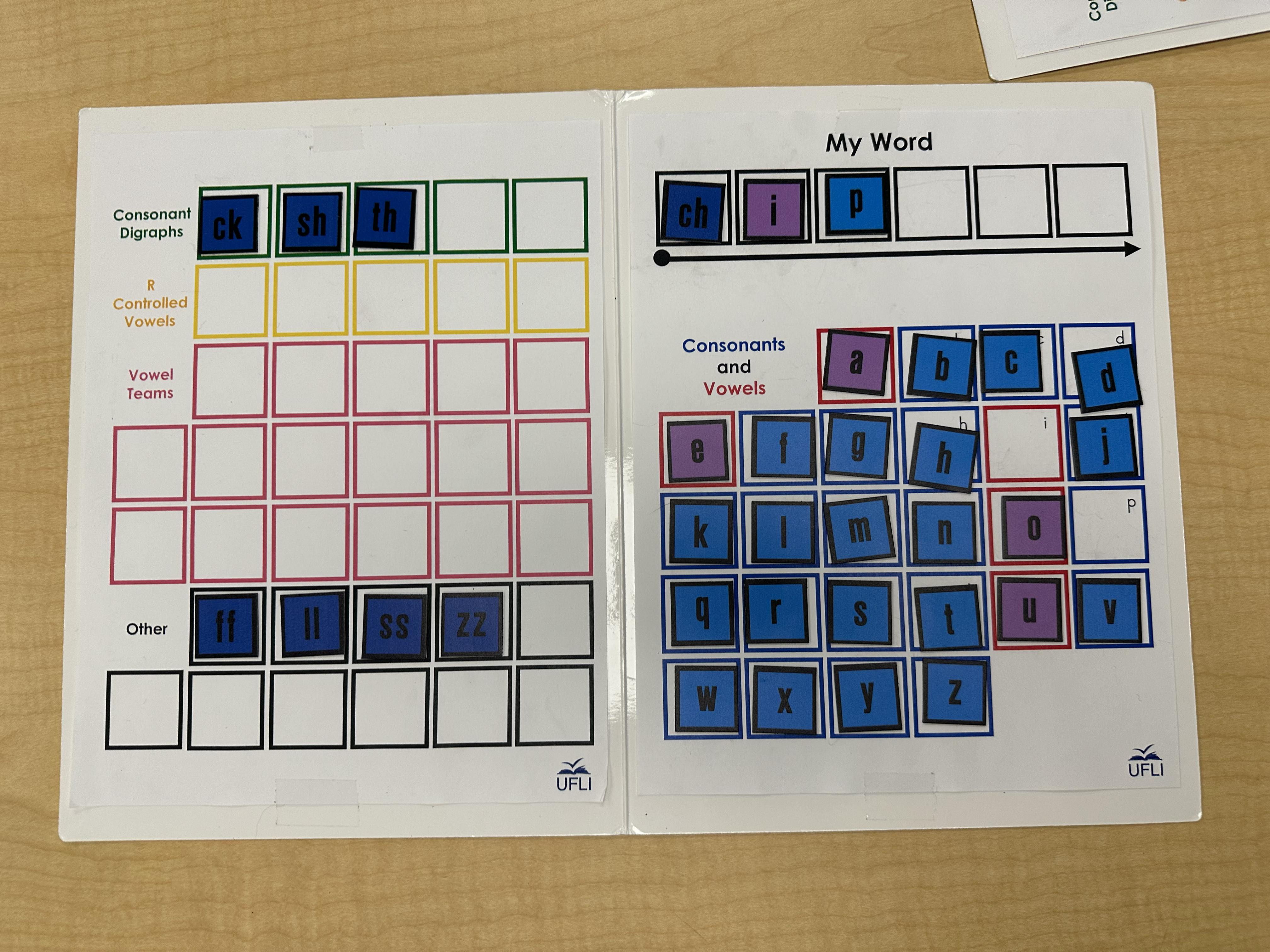
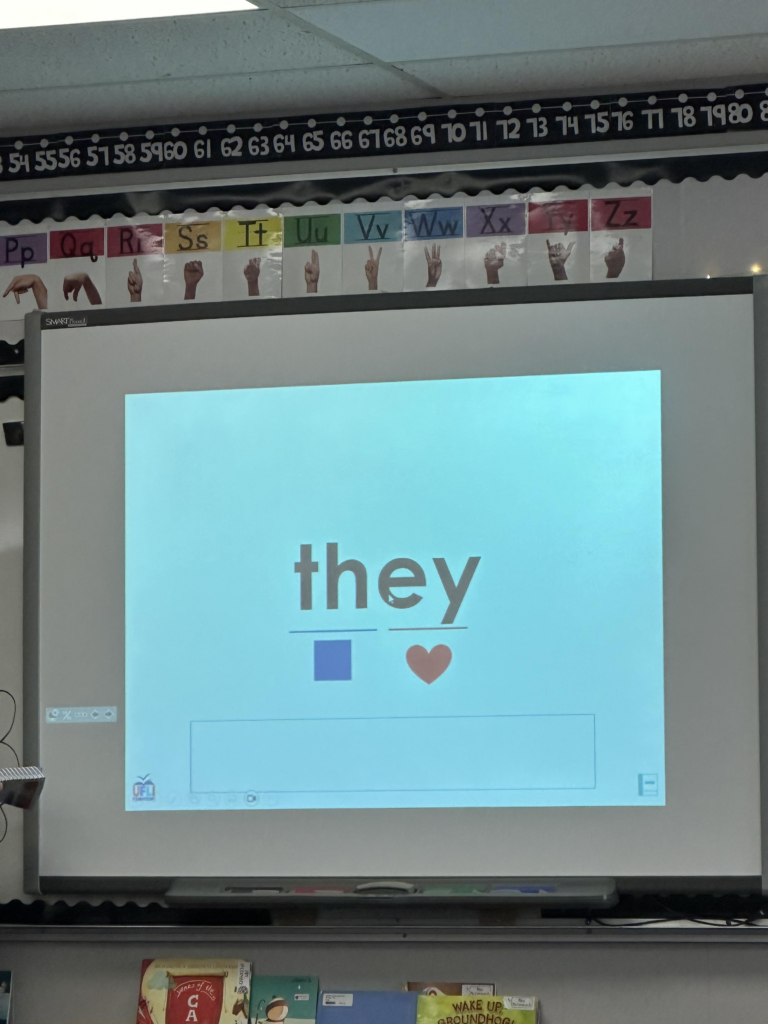
From there, students went back to the carpet and practiced Irregular Words and Songs. The songs that the teacher use are from another program, Heidisongs, but this style of learning reaches some students and differently and helps them learn these difficult words. For the Irregular Words, the box represents regular sounds that “make sense”, and the heart represents sounds they need to learn by heart because they don’t follow regular grammar concepts.
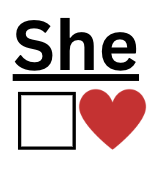
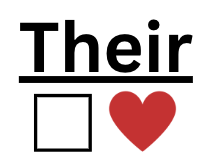
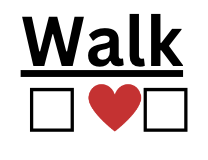
Back to their desks they went and began practicing writing words on a whiteboard. They wrote: so, their, the, are, you, walk, and talk.
Today, I picked up a new term: Schwa. These are like easygoing words, where people tend to get more laid-back when saying them.
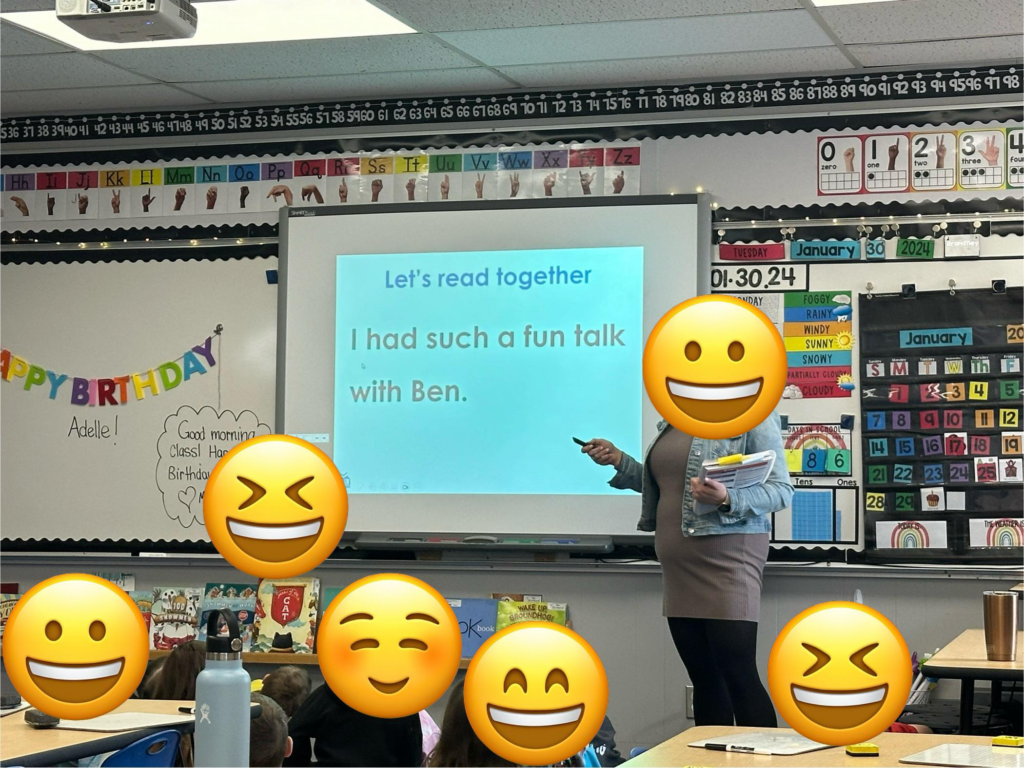
After, the students returned to the carpet and read short sentences together.
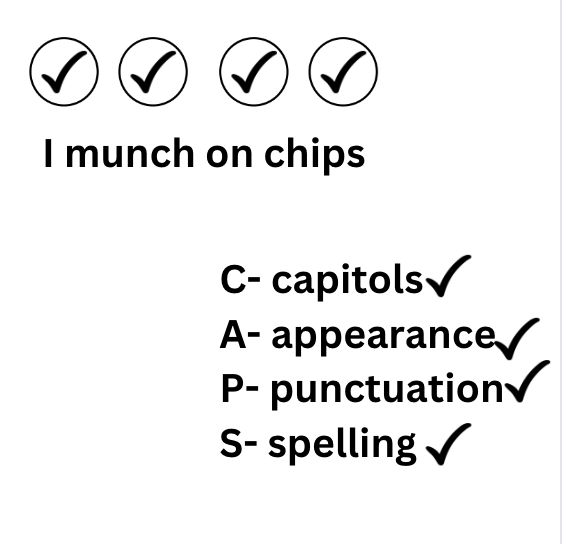
Due to the program’s repetition, students were familiar with what to do and how to set up their whiteboards for spelling practice together. The teacher says a sentence, and the students repeat it, counting the words. They draw circles to check off each word as they finish it. Afterward, they use CAP to review and check their sentence.
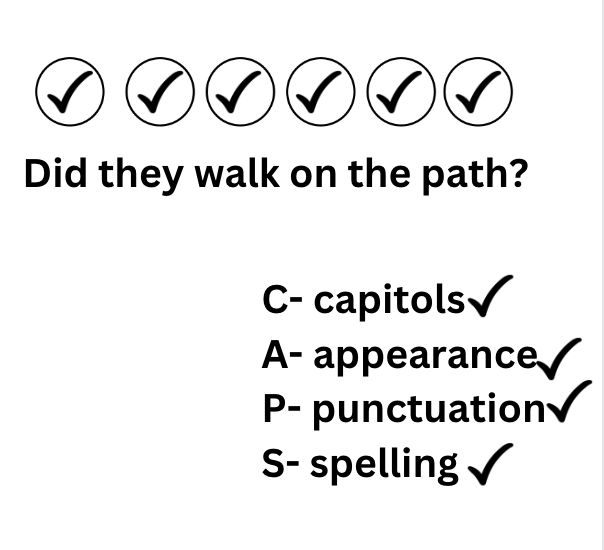
Next, the students head back to the carpet and practice reading a short story together. They take turns reading sentences, and then they read the whole thing as a group. After finishing this, the teacher selects three “Rocking Readers” – students who put in extra effort during this part of the lesson. Each chosen student gets to pick a pencil from a drawer filled with cool pencils.
Finally, students went into predetermined literacy groups. There they played literacy games to help strengthen their knowledge on what they just learned. They played games like rolling a die and saying the word the matches the number. There was also a snakes and ladders type game where they read words aloud. The teacher has a group and practices sections where she could see the students were struggling.
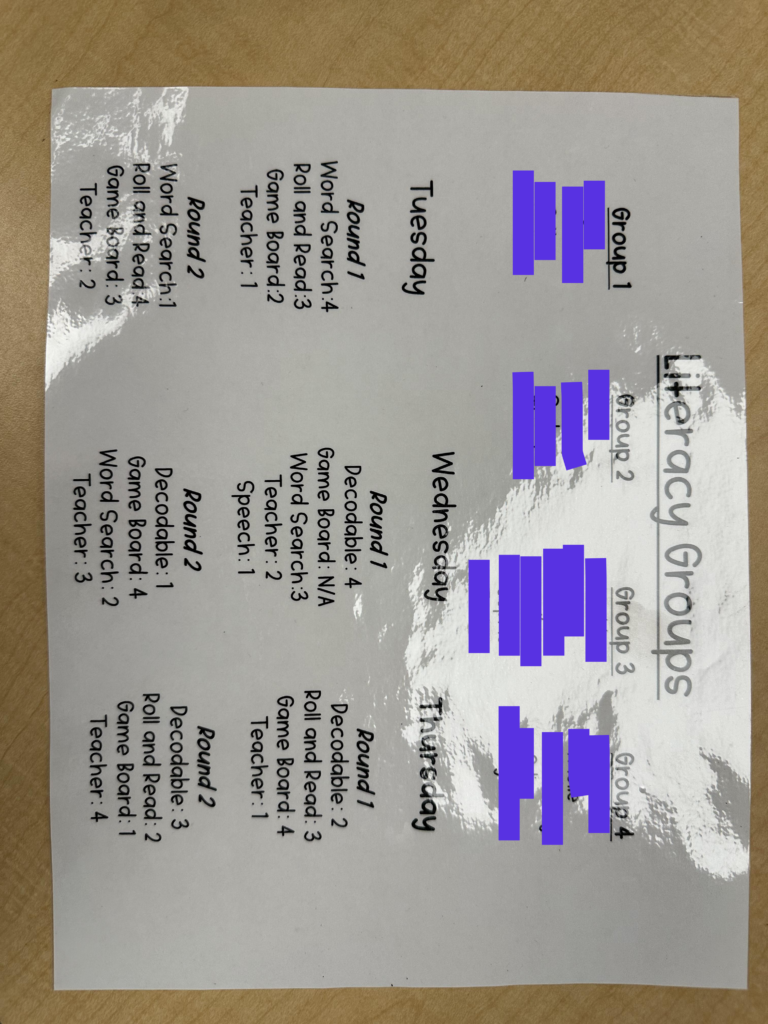
Every Friday, the teacher conducts a UFLI check-in. As shown below, this is what a typical check-in looks like. It helps the teacher assess where each student is, identifying areas they may need extra work or where students may be excelling.
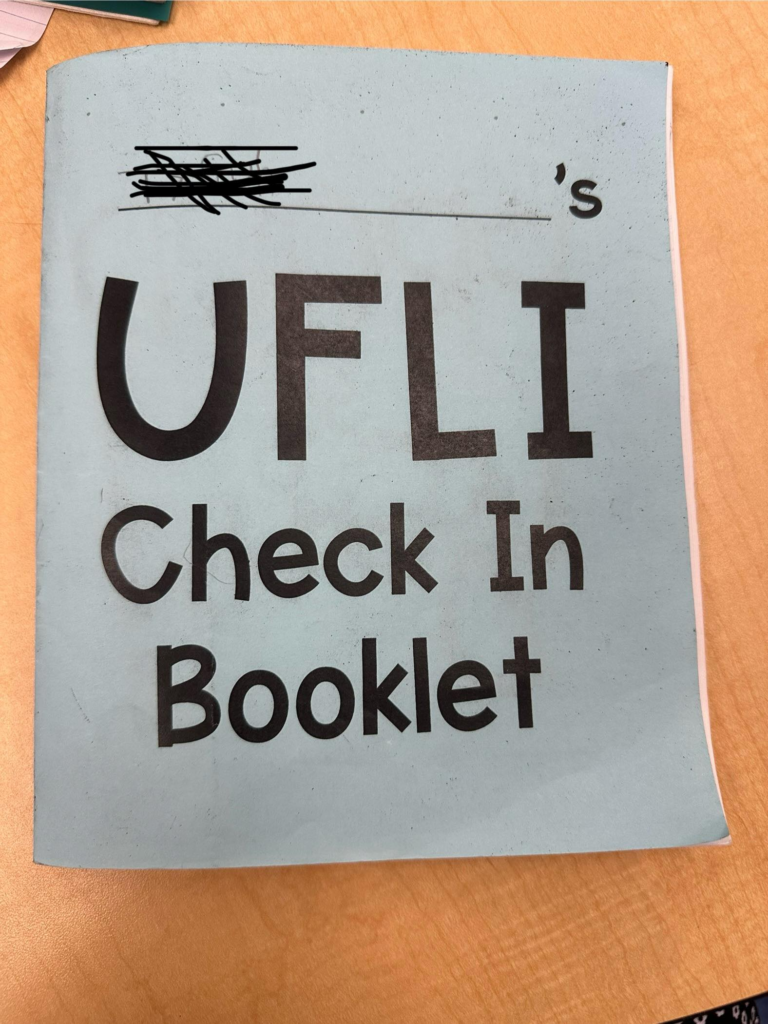
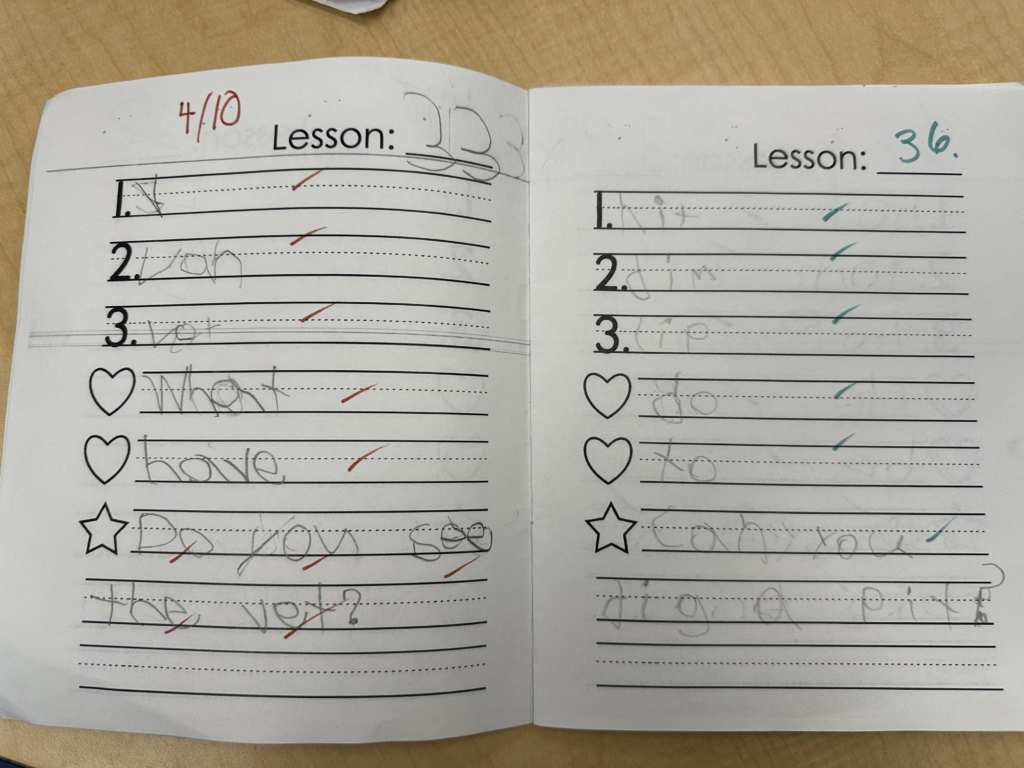
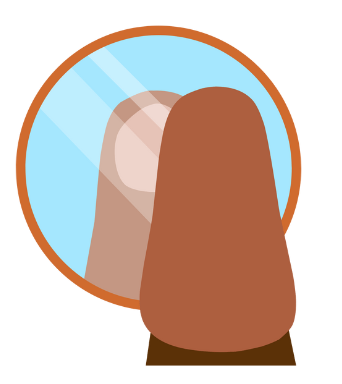

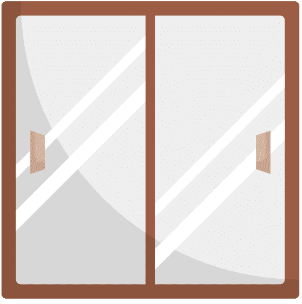
In class last week we discussed Rudine Sims Bishop’s theory on mirrors, windows, and sliding glass doors.
Bishop discusses how the idea of books as mirrors suggests that when readers engage with a story they can see aspects of their own lives reflected in the story. It implies a personal connection where readers can identify with characters, situations, or emotions within the book that resonate with their own experiences.
Where as the idea of books as windows suggests that stories provide readers with the opportunity to learn about lives and stories that can be different than our own. Like looking through a window, readers can peer into diverse perspectives, cultures, and experiences broadening their understanding of the world. Books as windows encourage readers to explore human diversity, fostering empathy and a deeper appreciation for the multiplicity of narratives that exist beyond one’s personal scope.
Finally, the idea of books as sliding glass doors suggests that when readers immerse themselves in a story, they feel apart of the world created by the author. It goes beyond observing the story, it’s an experience where readers can step into the narrative, and become part of the fictional realm. This immersive quality of literature allows readers to empathize with characters, feel the emotions within the story, and experience a sense of connection to the fictional universe. experience.
Inforamtion above found at https://www.greatschoolspartnership.org/mirrors-windows-and-sliding-glass-doors-a-metaphor-for-reading-and-life/
It is important to remember library collections, whether it’s a whole school or classroom library, they reflect the world outside of our small community.
Starting in kindergarten, one of the Big Ideas for literacy revolves around “Stories and other texts help us learn about ourselves and our families”. Even in grade nine the Big Idea states “Exploring stories and other texts helps us understand ourselves and make connections to others and to the world”. It is so important for teacher to bring in books from all over so students can experience different diversities, cultures, race, and so much more.
Below are some books that welcome diversity into the classroom and allow the children to use as mirrors, windows, and sliding glass doors.
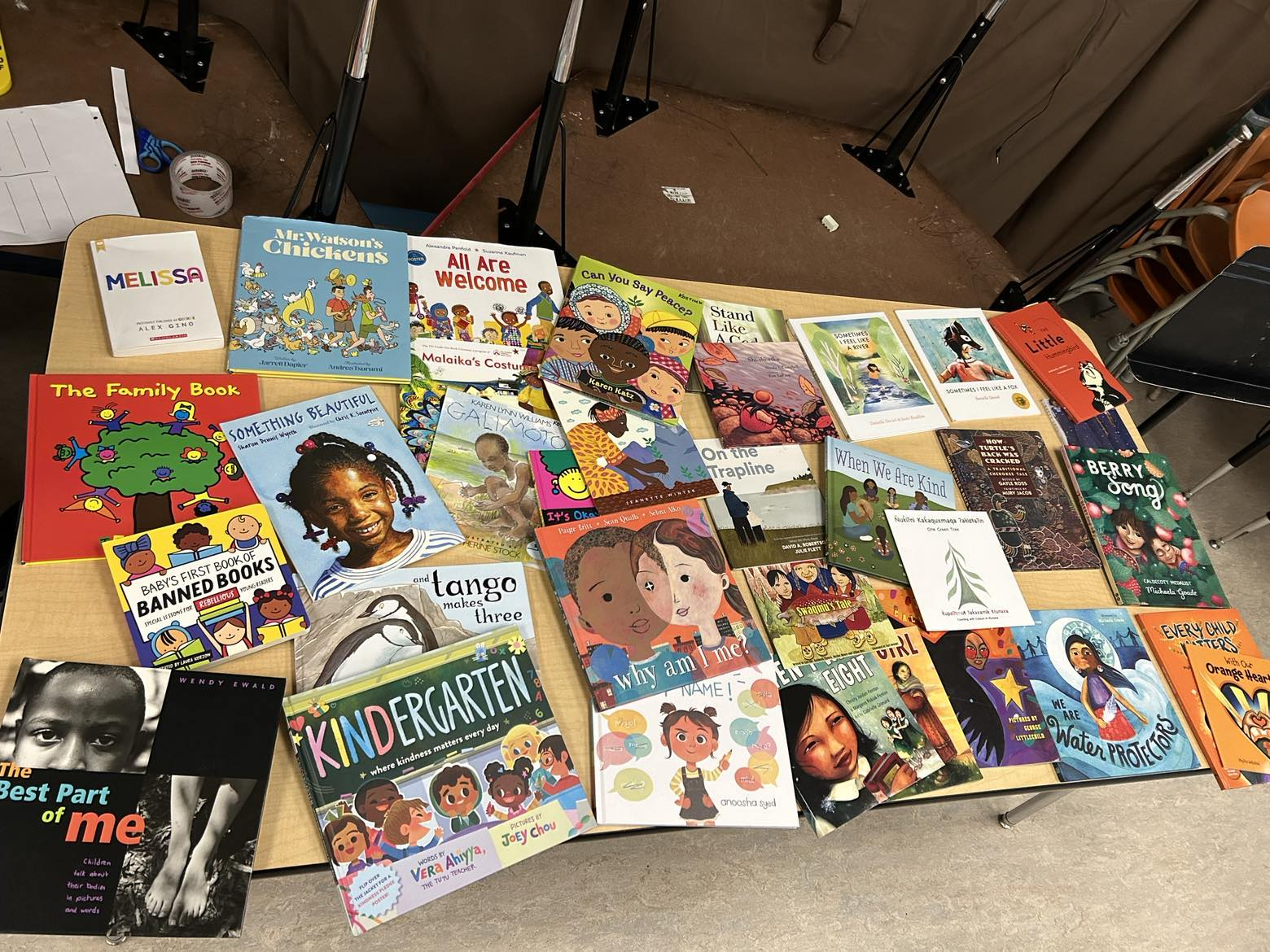
Baby’s First Book of Banned Book is a very interesting book. Stories that I read as a kid are now banned. Even a story I read for university is banned. I wish I could find where I could buy this book because it’s so strange to me why some of the books are banned.
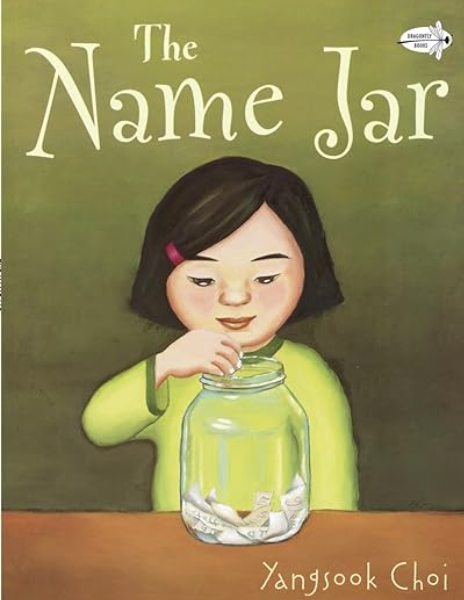
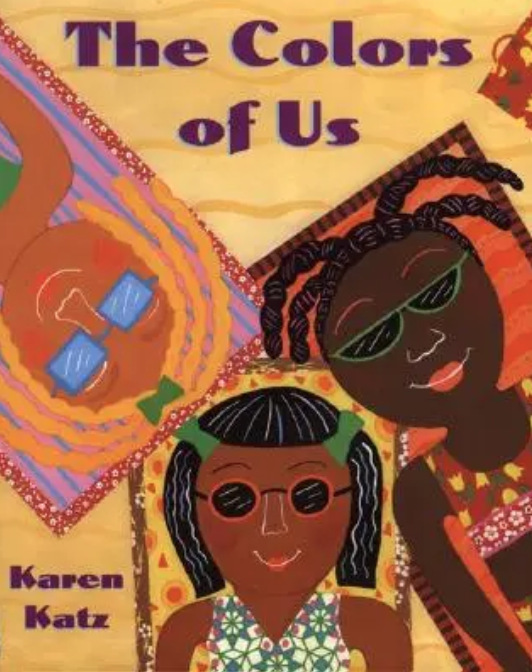
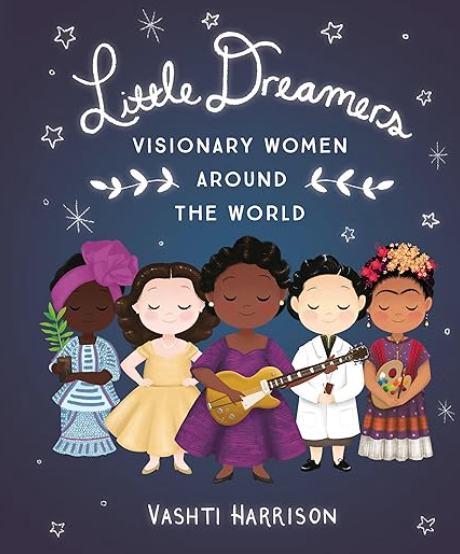
I really like the Little Dreamers book. My friend bought it for my daughter and I’ve read it to her so many times. I feel it is such a woman empowering book.
It is important as teachers that we consider what books we bring into our classrooms and make sure they are appropriate and relevant to your students and the topics you are teaching.
Walking into the grade 1 classroom was like stepping into a dream. The teacher had everything so well-organized and labeled that I will be borrowing a lot of ideas from her! I just loved how well laid out the classroom was and how inviting it looked!
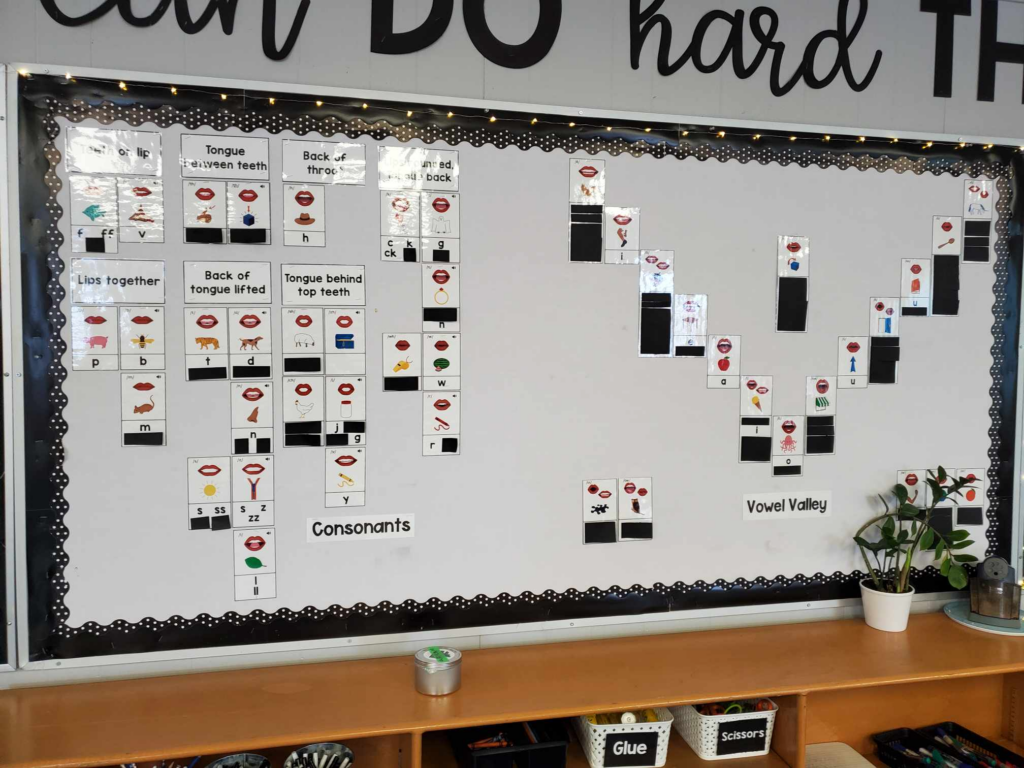
The most prominent feature that promoted literacy in this classroom was her sound wall. It occupied a large bulletin board and was well-spaced, making it easy for all the students to see while sitting at their desks. One intriguing aspect was covering up the sounds students haven’t learned yet. I haven’t had the chance to ask her why she does that, but my guess is that she wants the sounds they’ve already explored to stand out more.
My eyes were next drawn to her immaculate library. Although she is moving onto a different literacy approach, she has put love and effort into that library, so she still has it available for her students. Each bin is labeled with the reading level, making it super simple for the students to select a new book to discover.
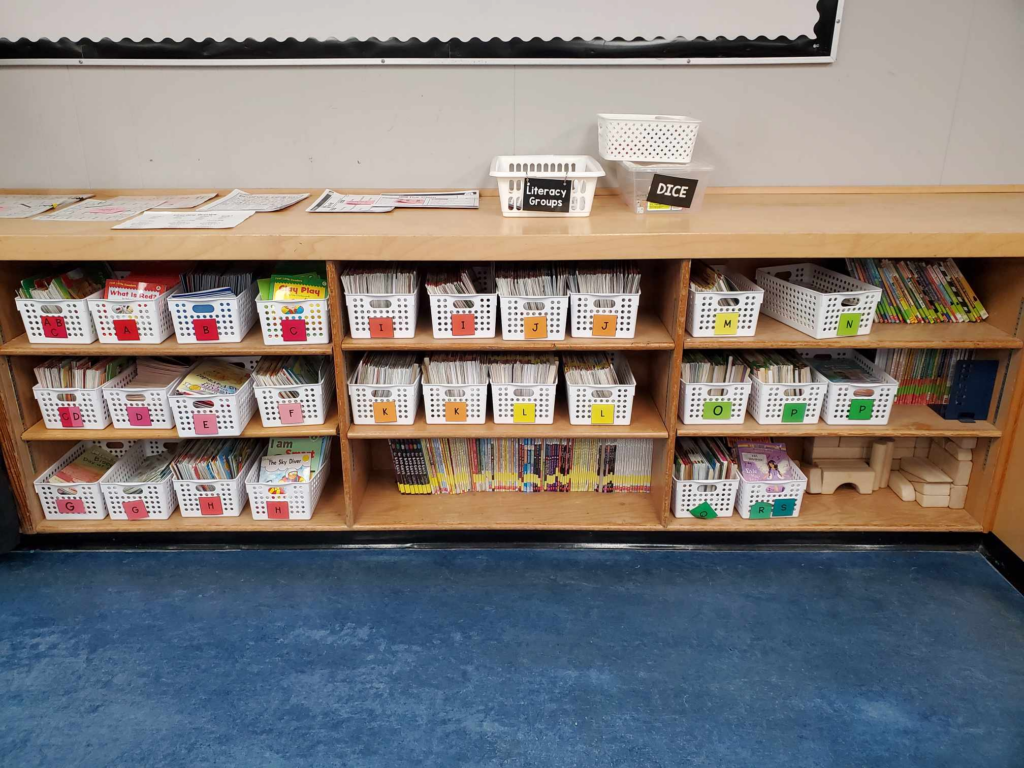
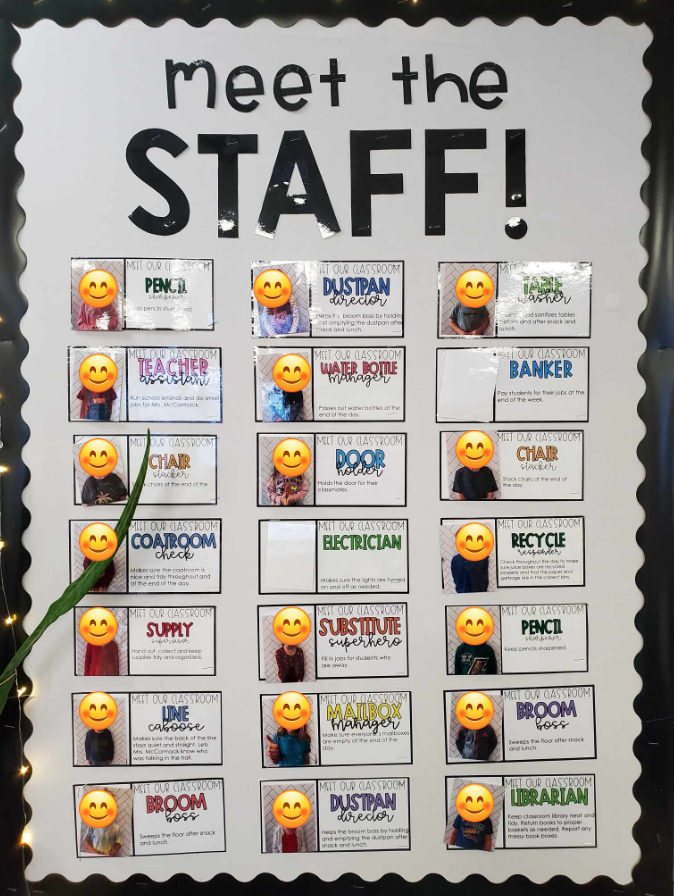
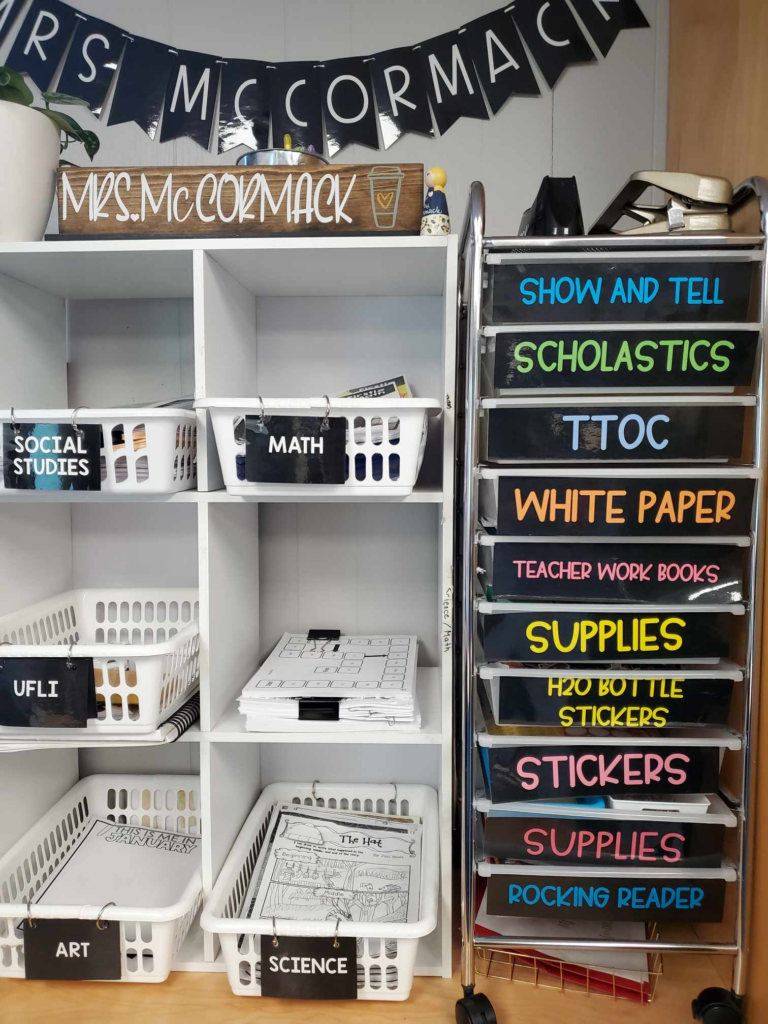
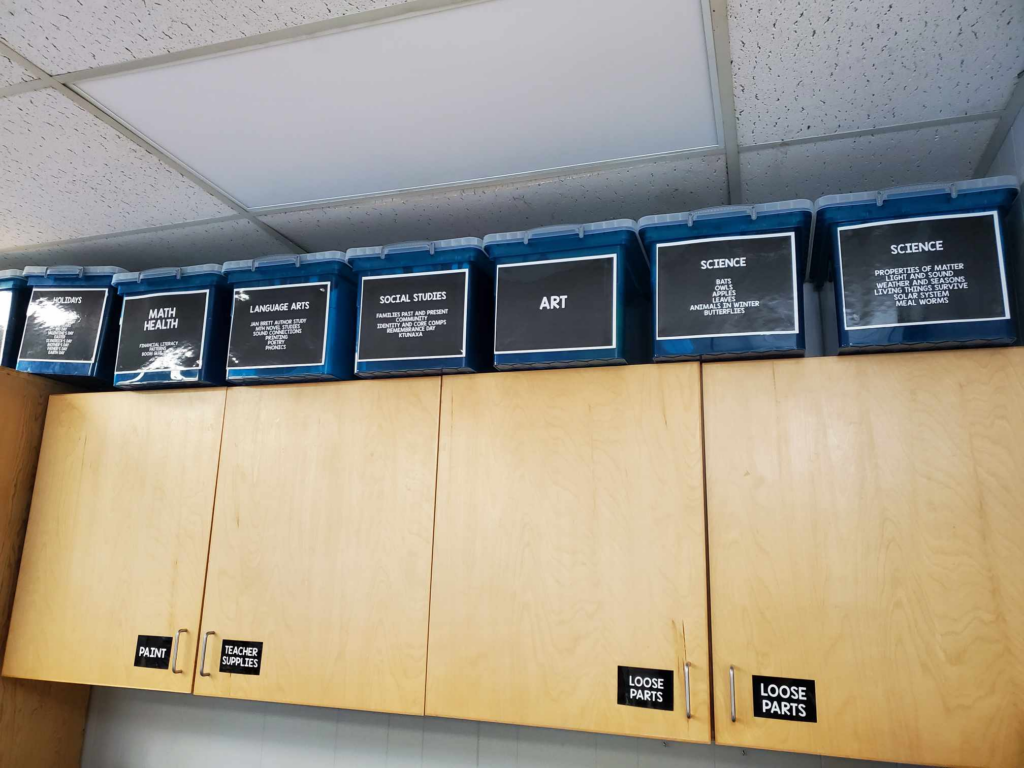
I really loved how the alphabet on the wall also included the letters shown in sign language. I believe it’s an important skill for students to have. The alphabet was displayed at the front of the room, above the teacher’s working/learning area.
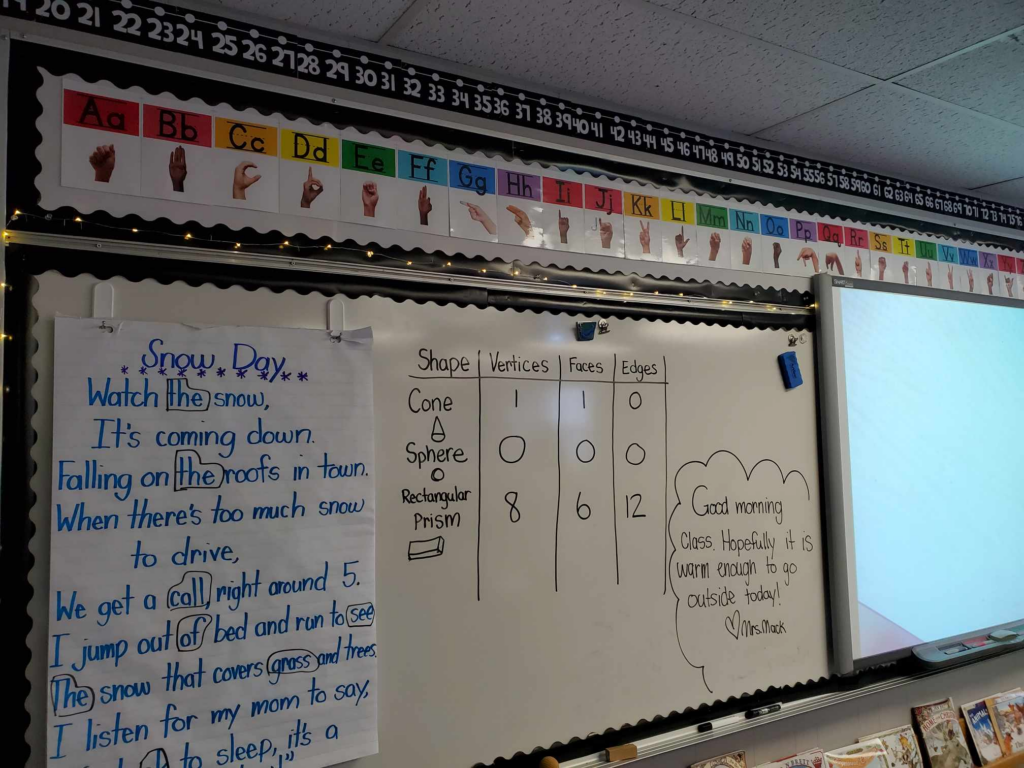
The picture above also shows a morning meeting message where the students identified specific words in the message. I have not yet had the chance to ask the teacher what they were looking for in this message.
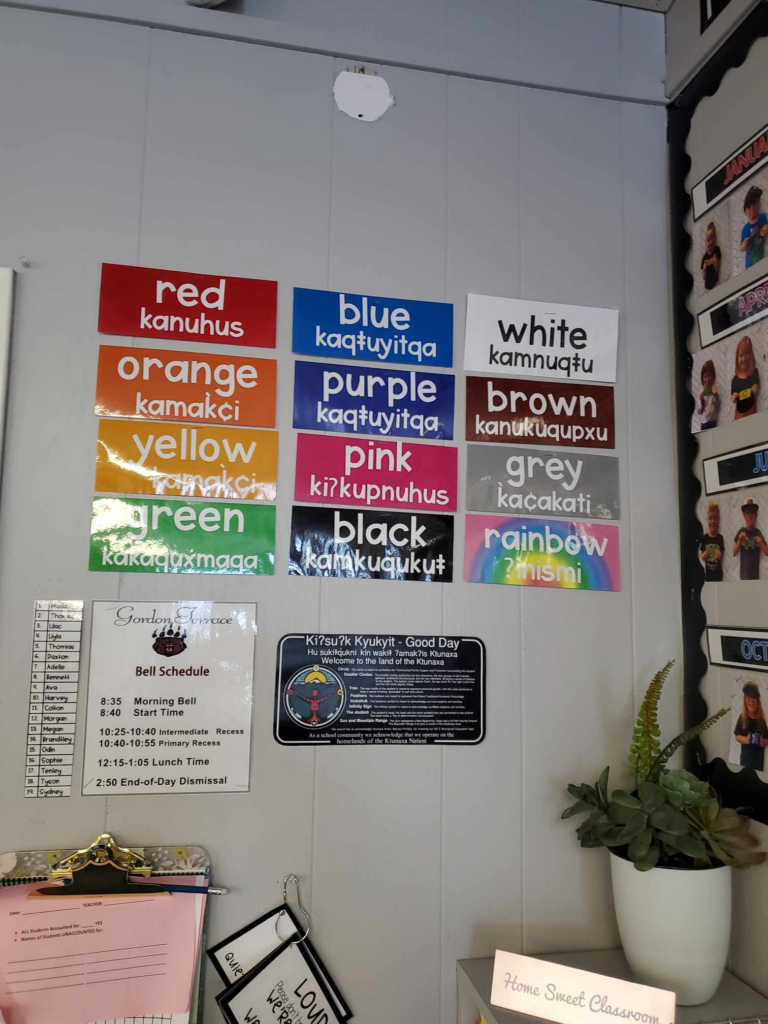
Another element she had in her room was the display of colours. Normally living in Canada you would see the words written in English and in French (Black-Noir) but in her room she has the colours displayed in English and Ktunaxa, which is our local Indigenous tribe.
The three images below represent my dream ideas for reading nooks. In the first picture with the tree, I adore the aesthetic. An idea I had is to write the title of every book I or the students read on leaves and add them to the tree, filling it with leaves over time. In the second picture, I appreciate the concept of changing the theme of the nook based on what we are learning at the time. This image seems fitting for a unit on discovering the countries of our world, but it can be adapted for topics like poetry or ecosystems. As for the last picture, I love how organized it looks. I want students to find books with ease and treat them with respect. When books are displayed like this, I believe both conditions are met.
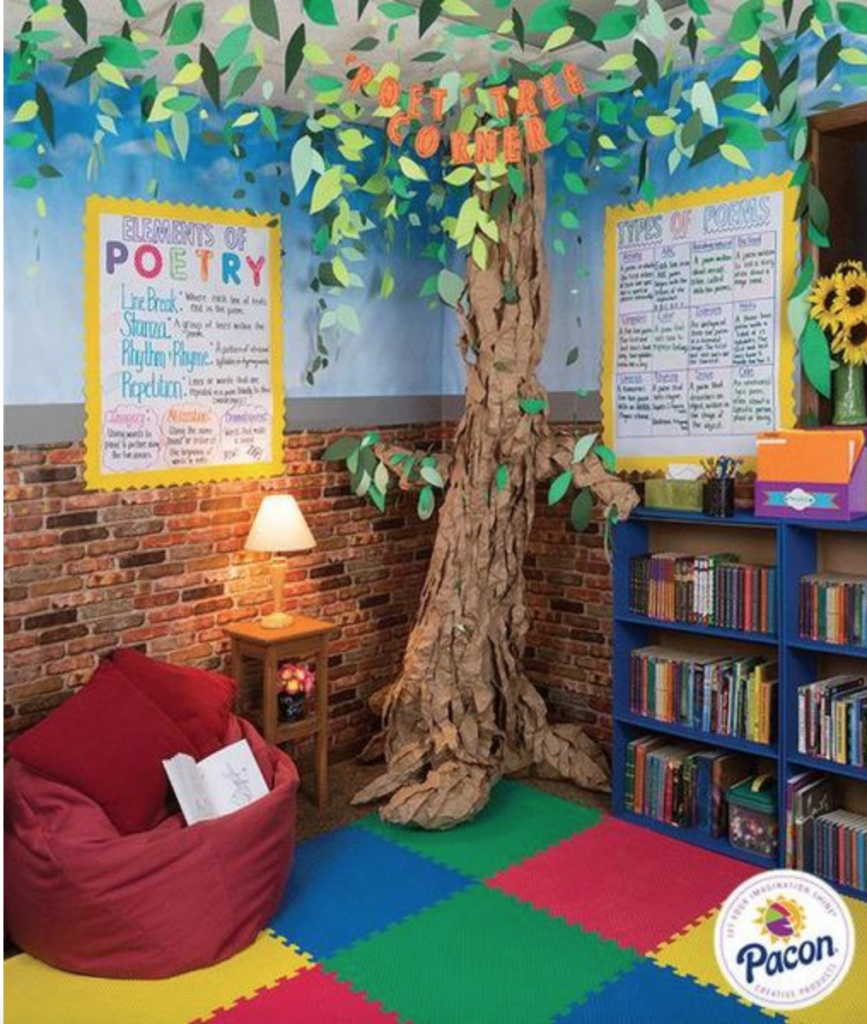
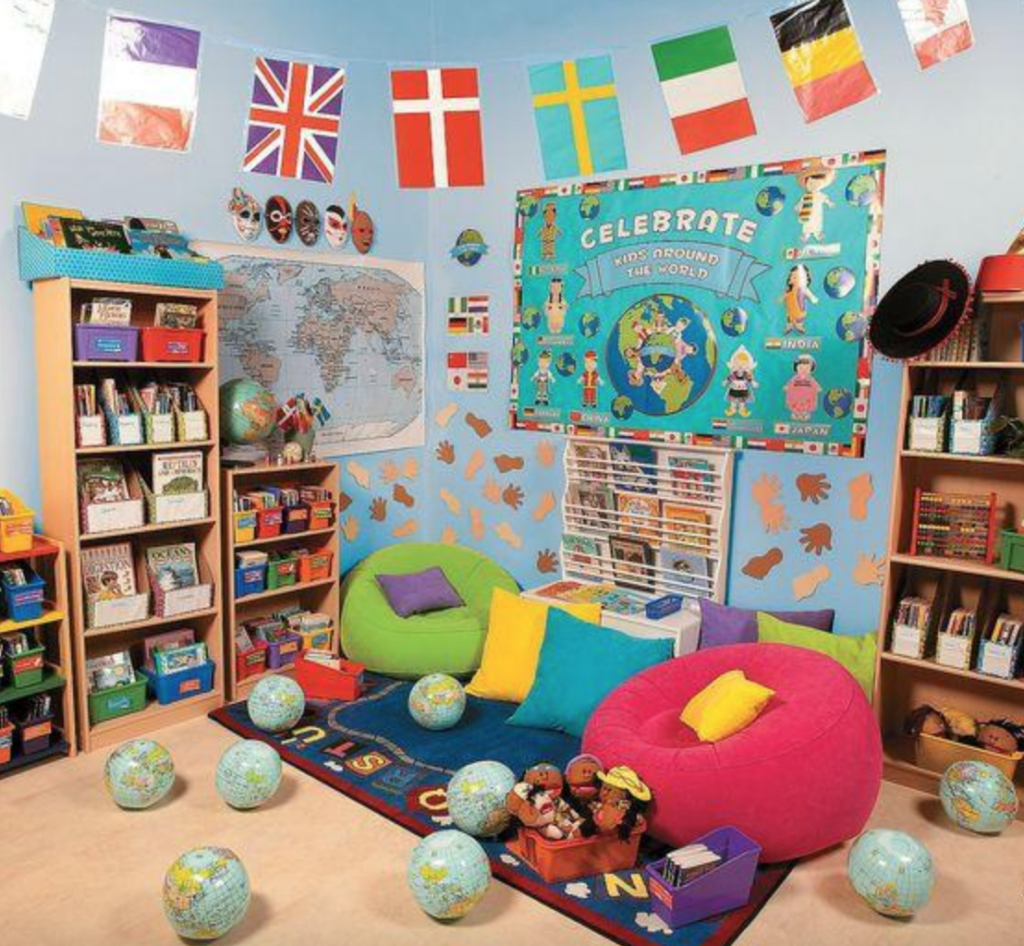
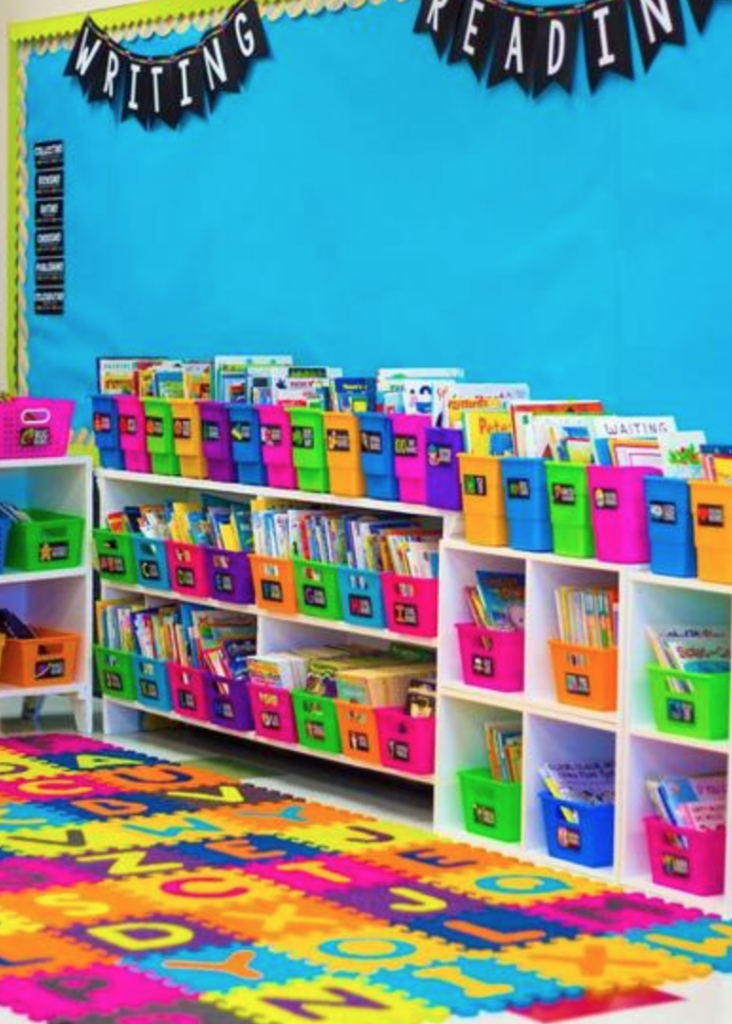
Images above from: https://www.boredteachers.com/post/reading-corner-ideas
© 2026 Educational Adventures
Theme by Anders Noren — Up ↑